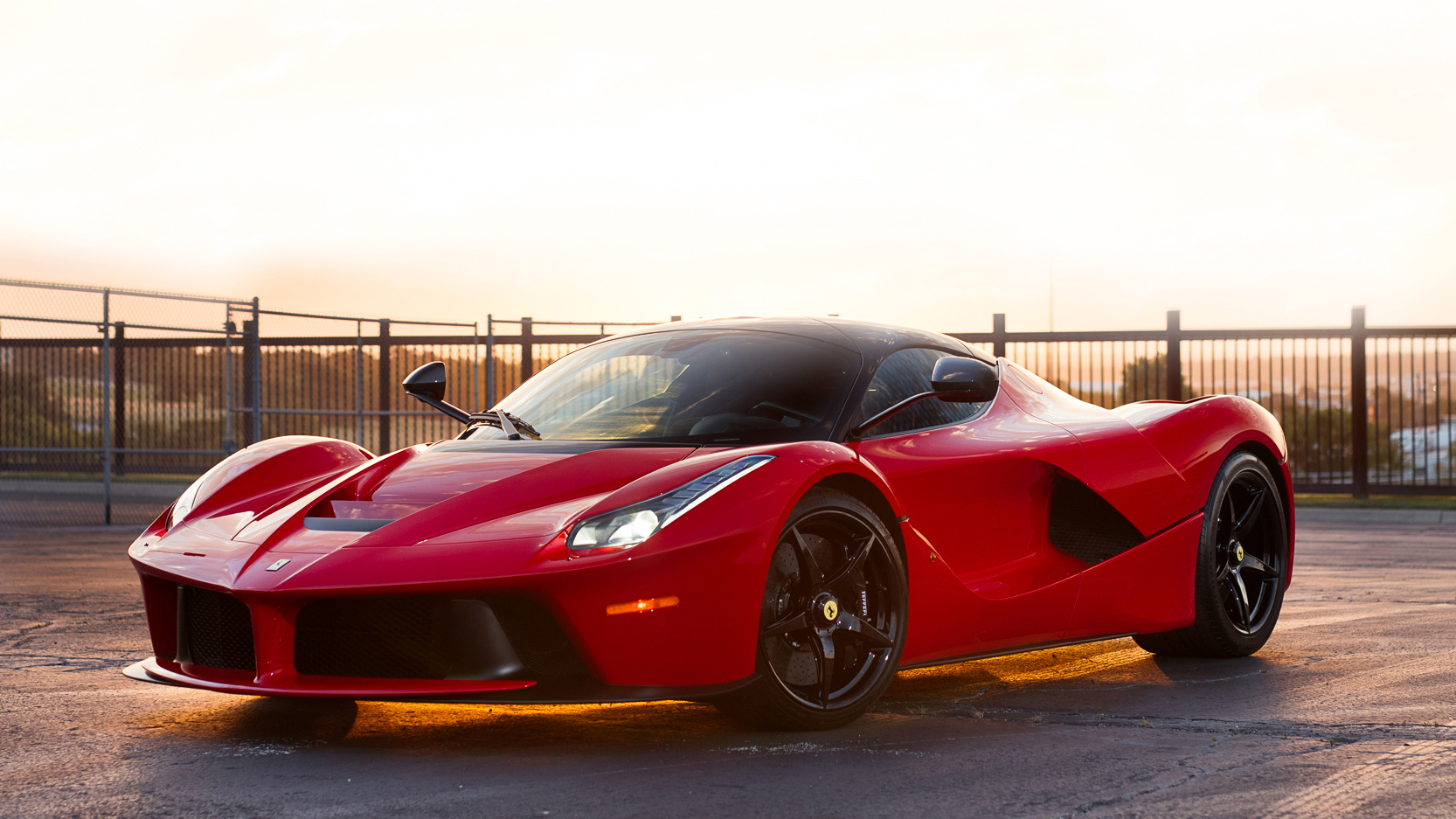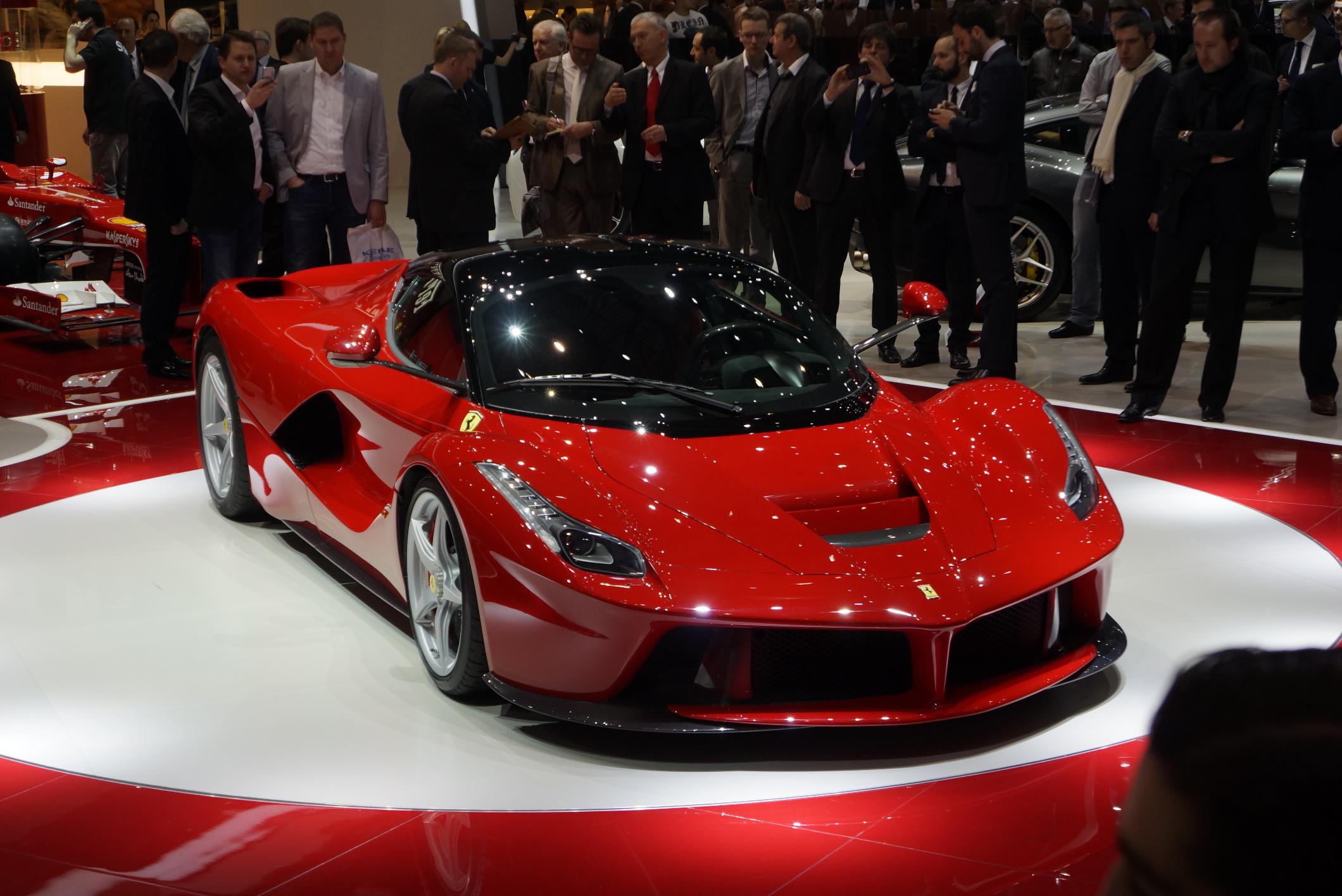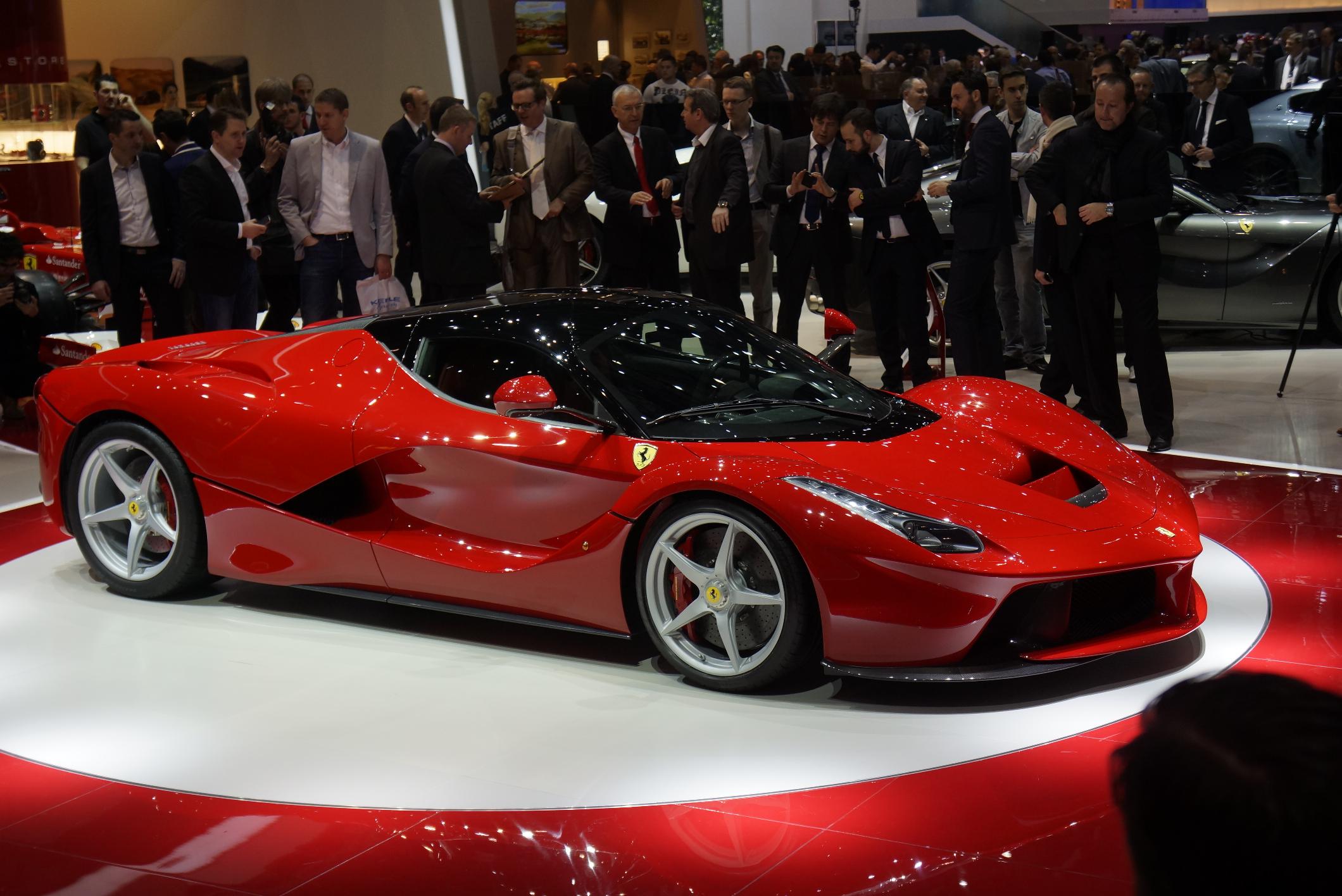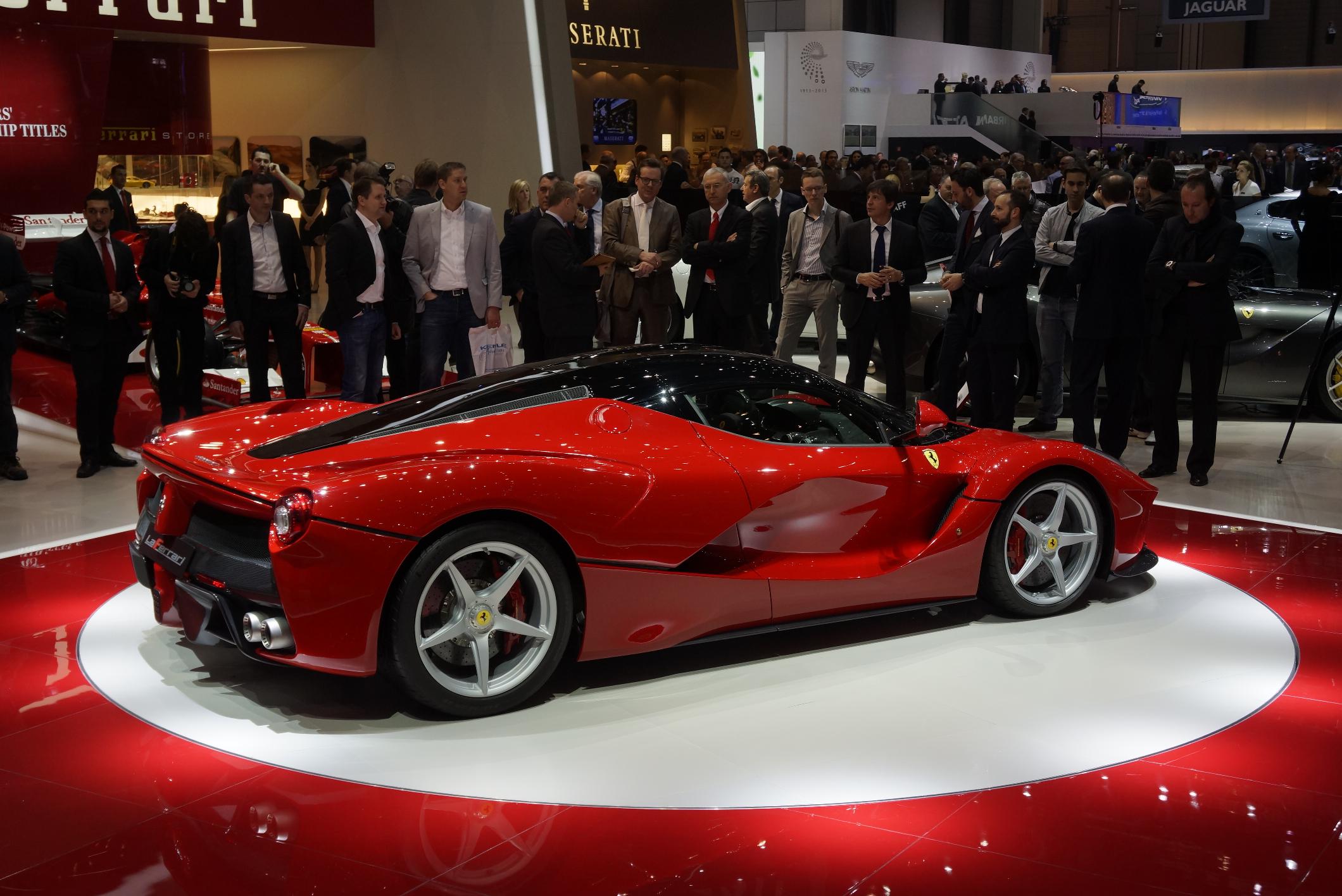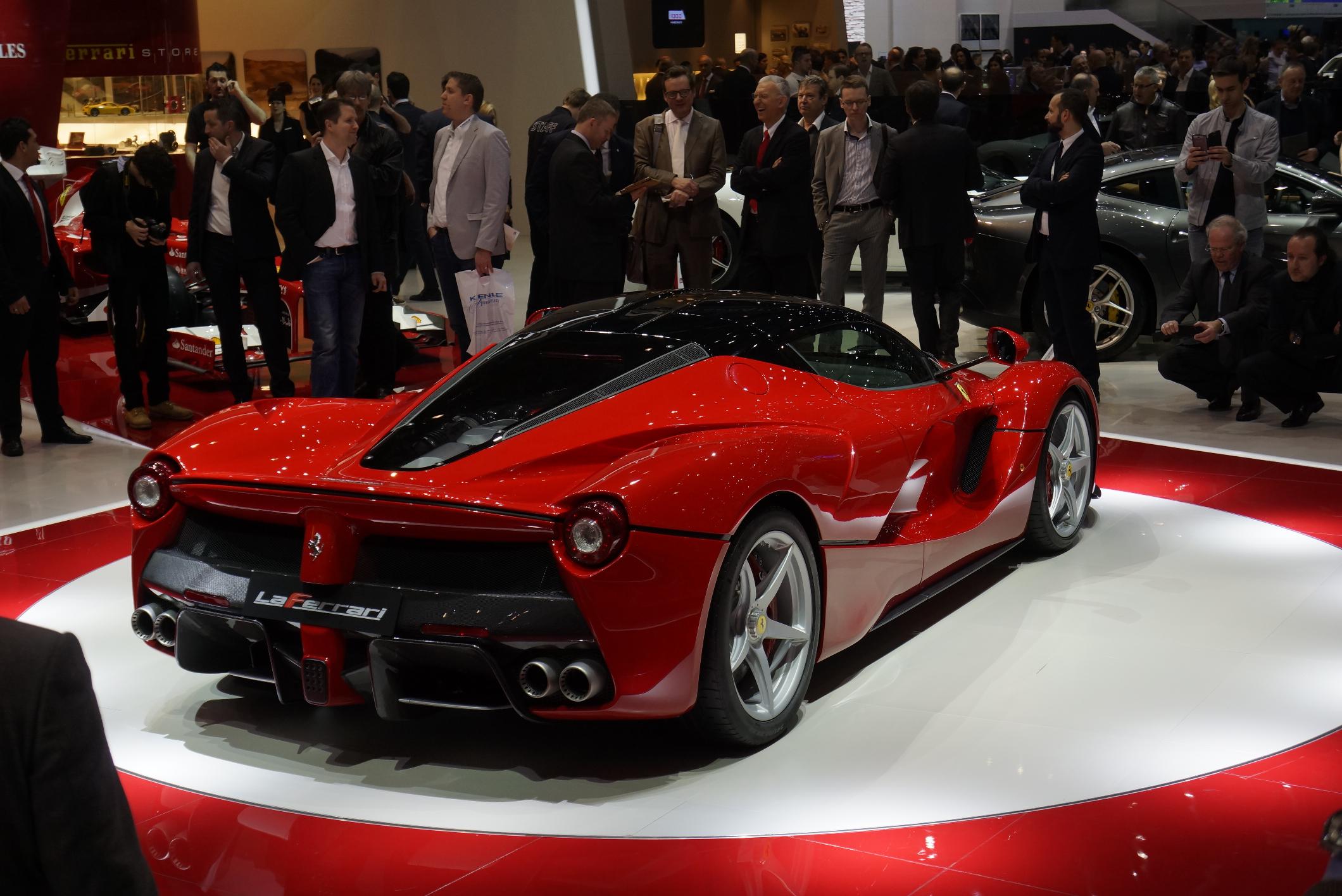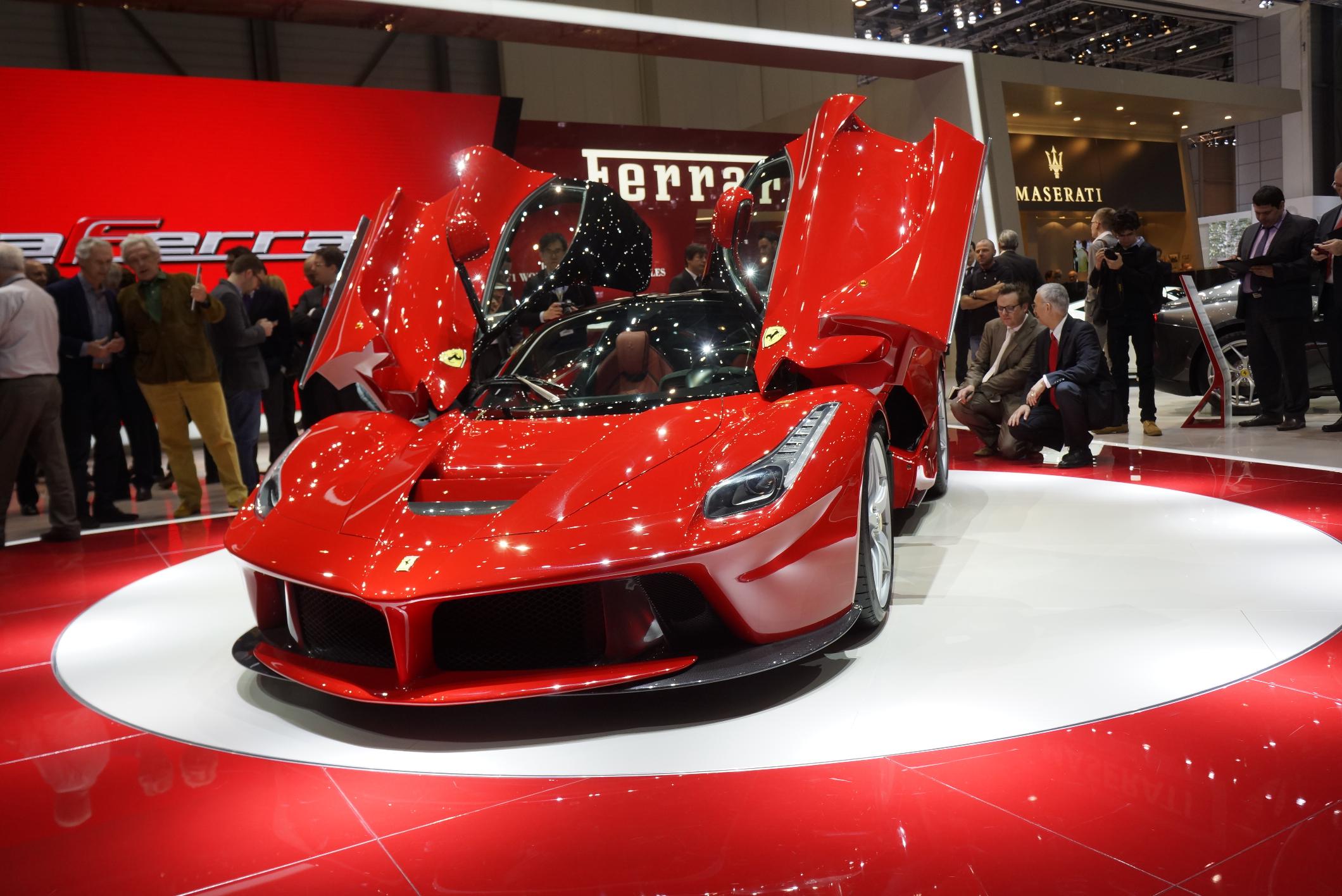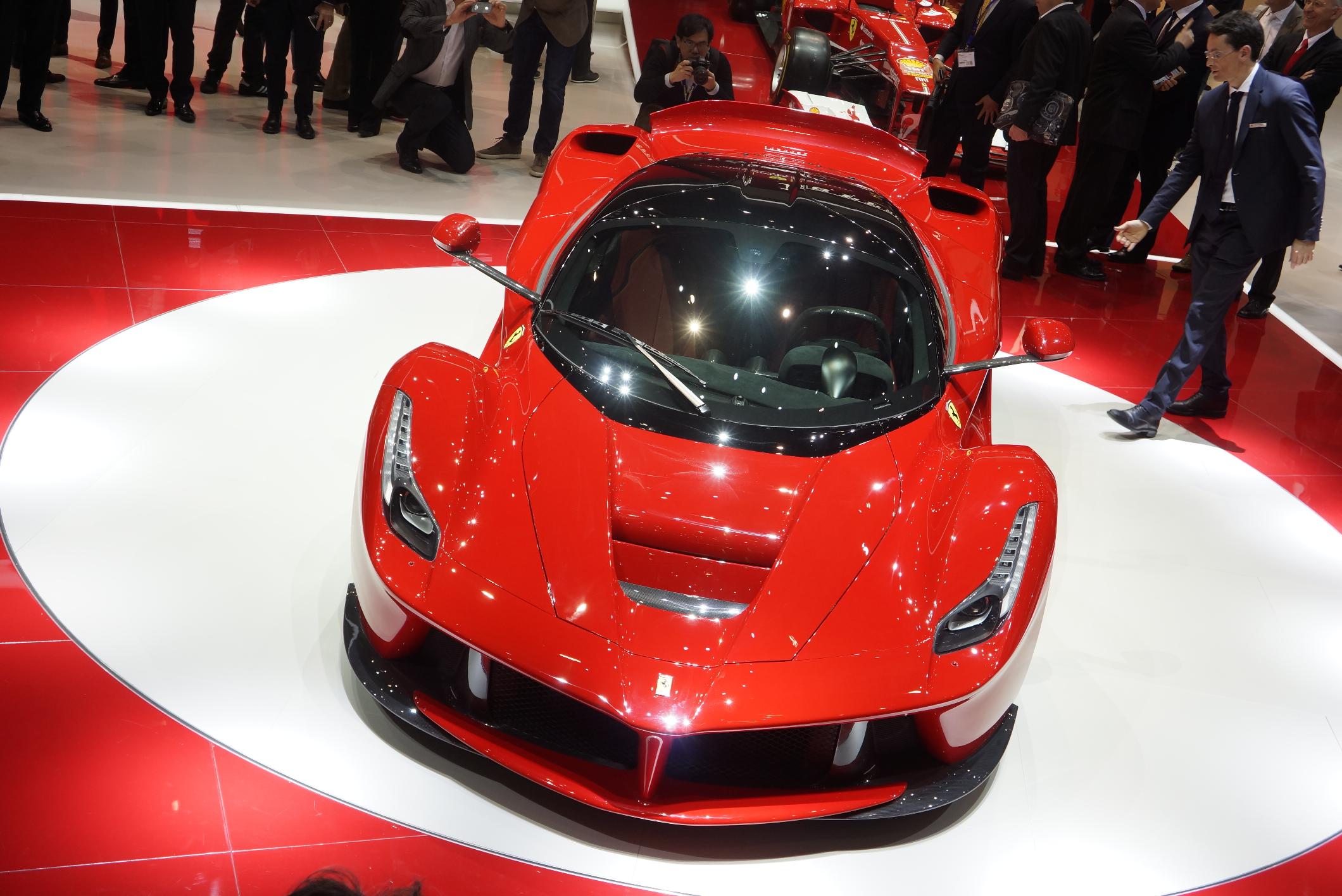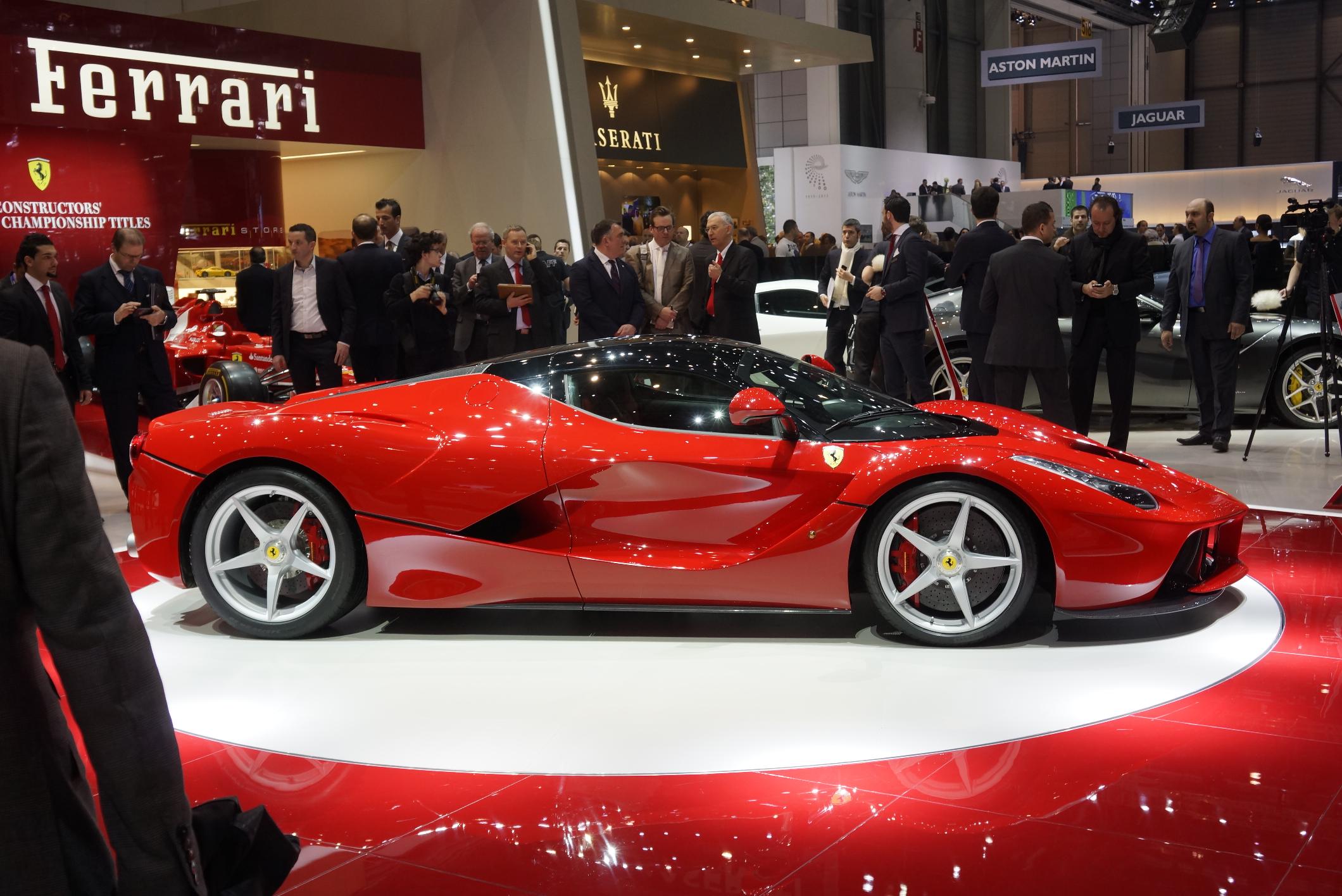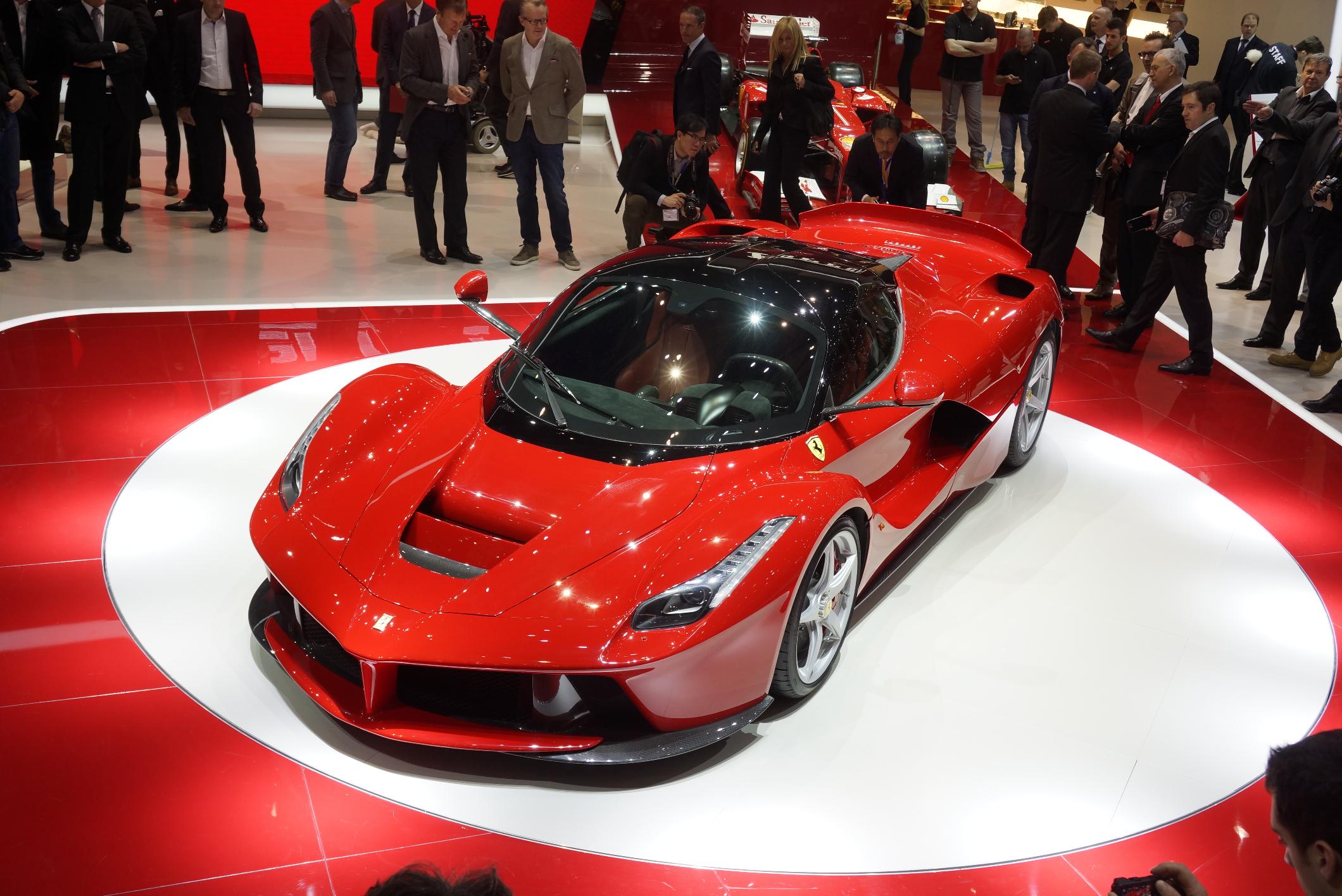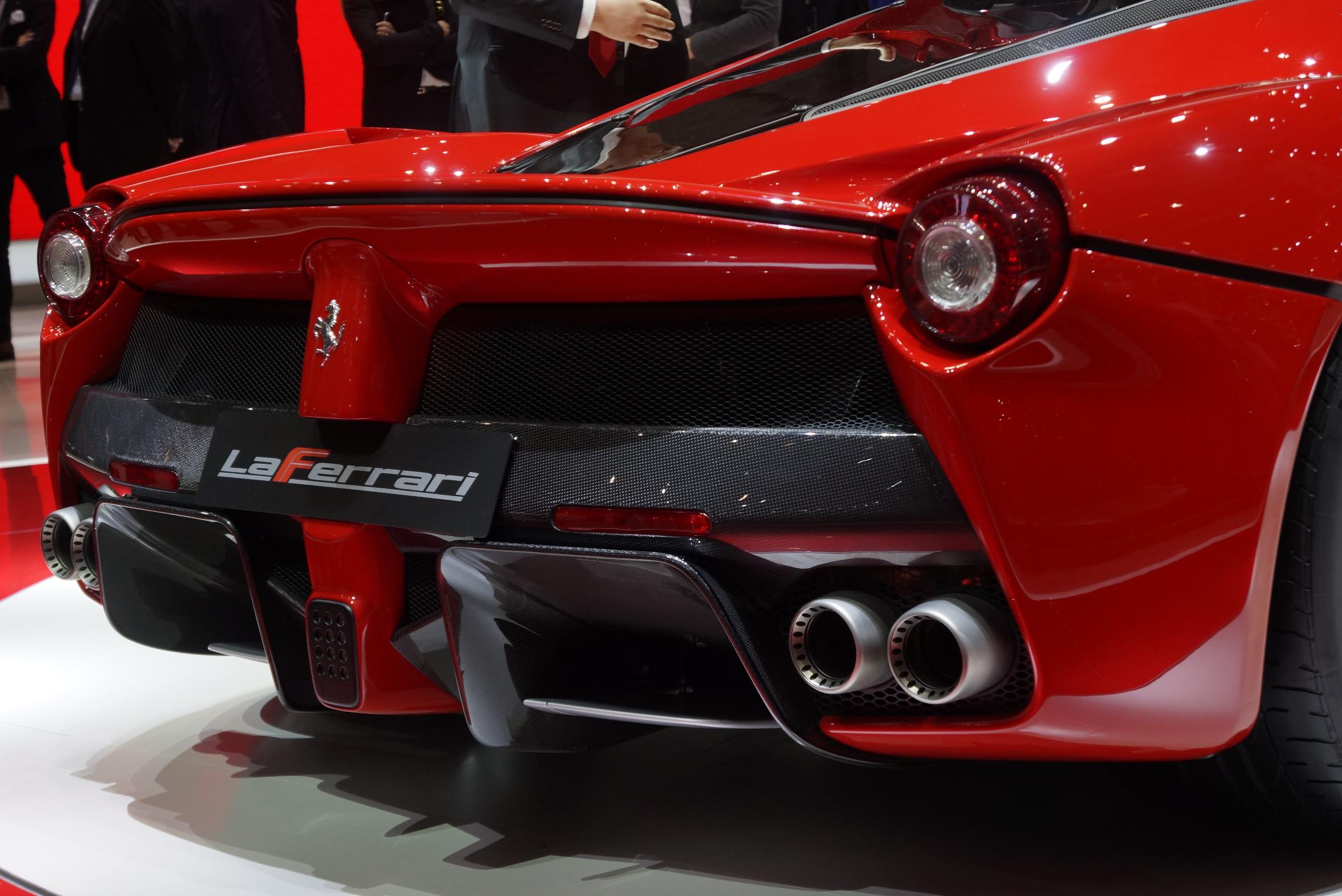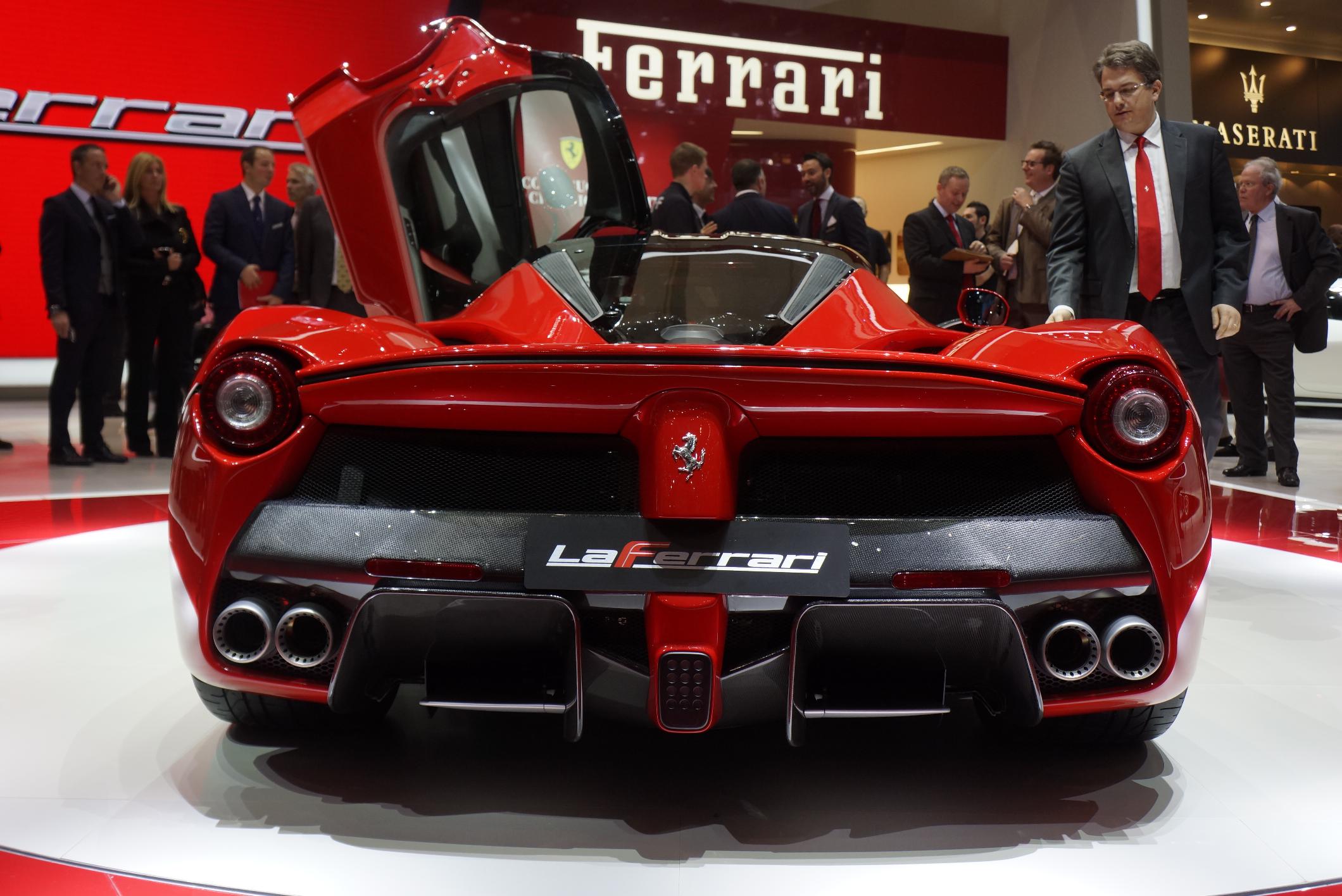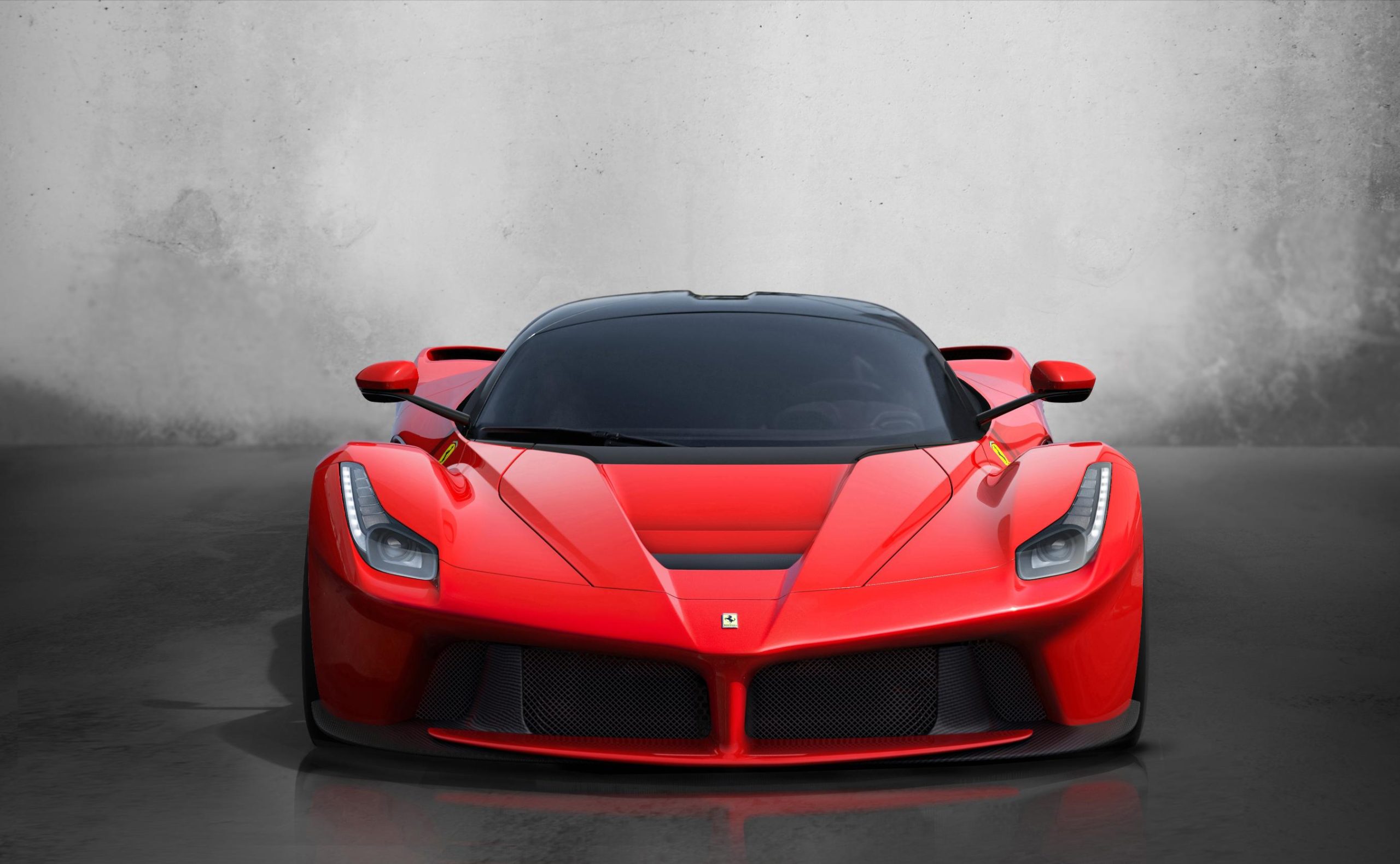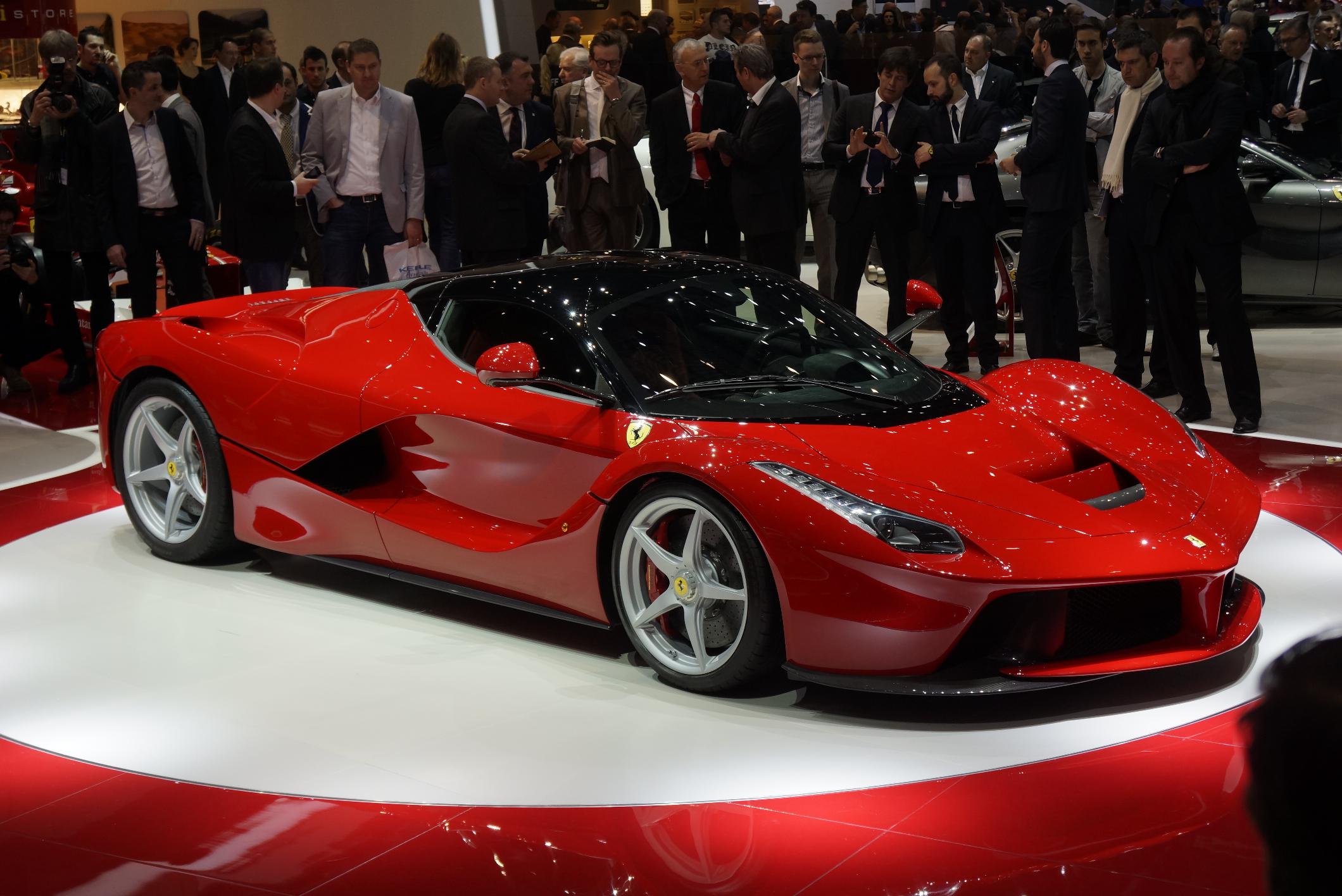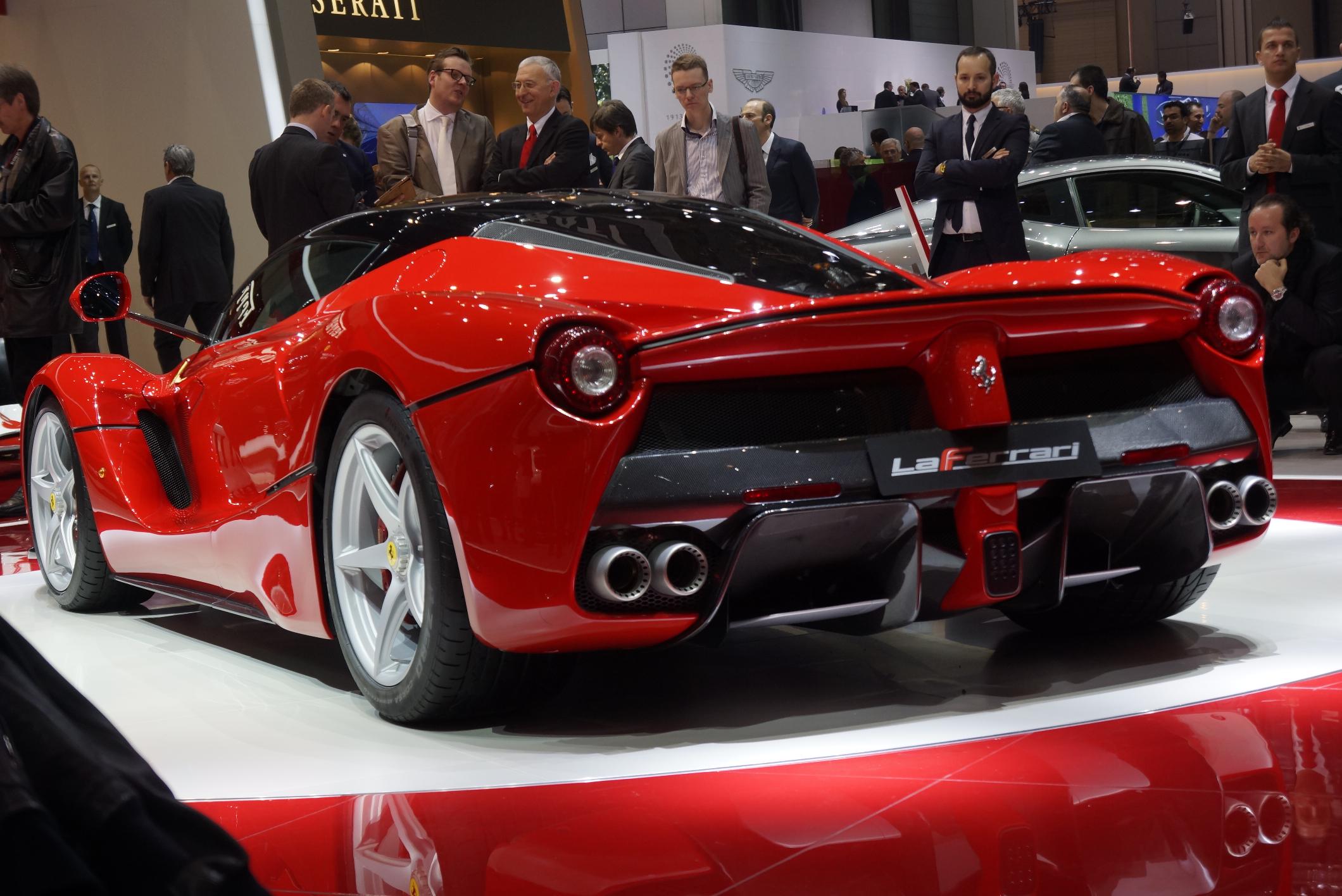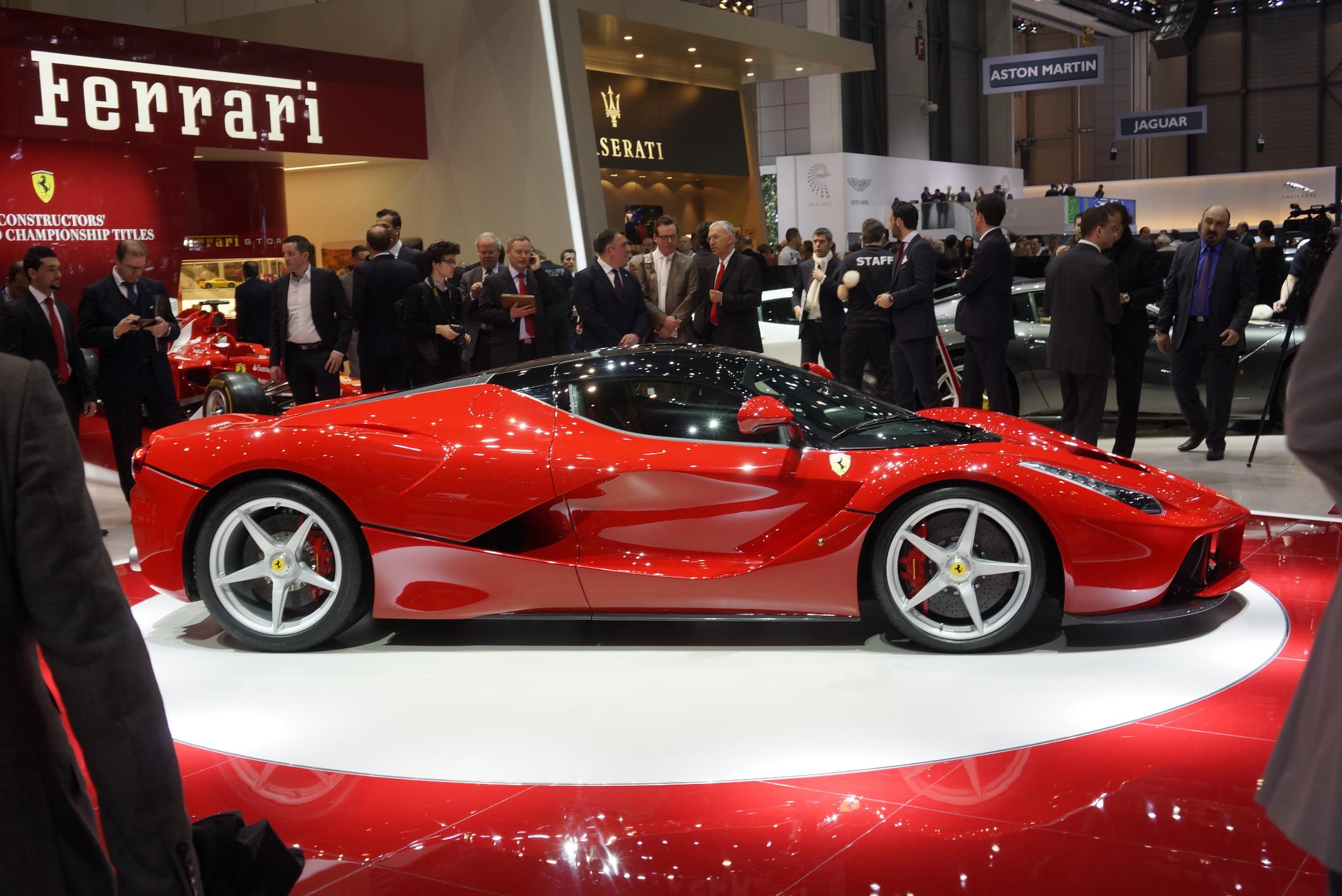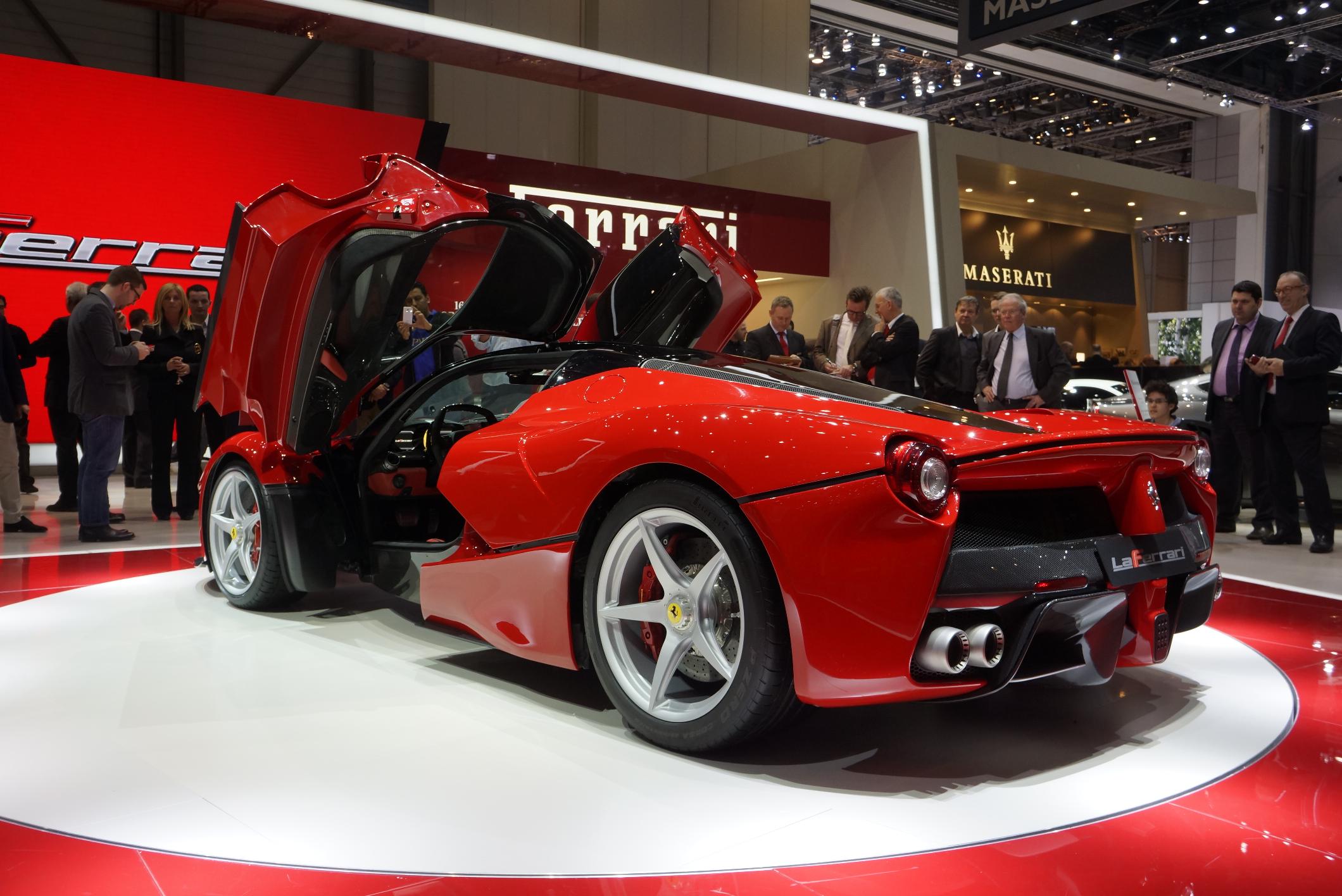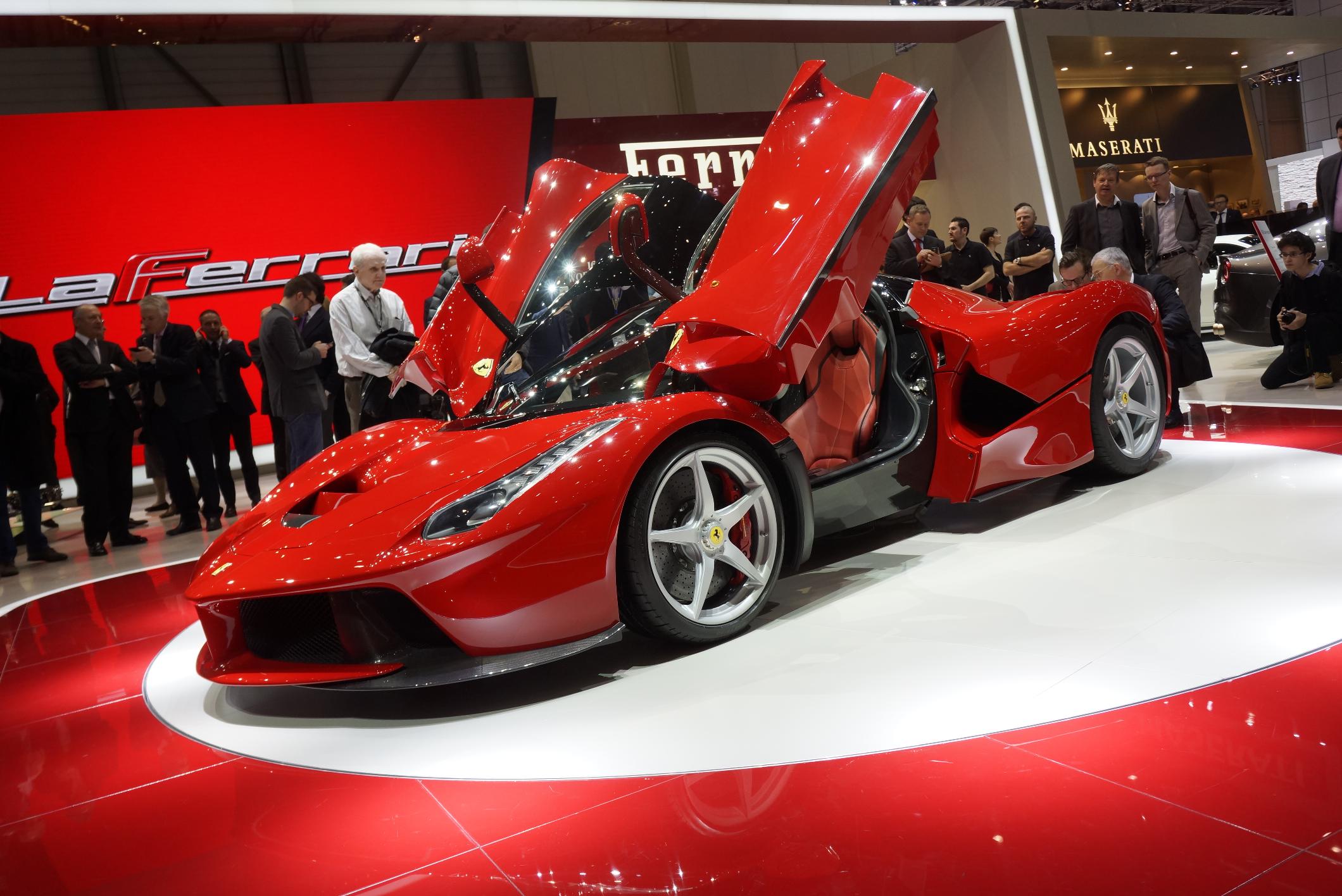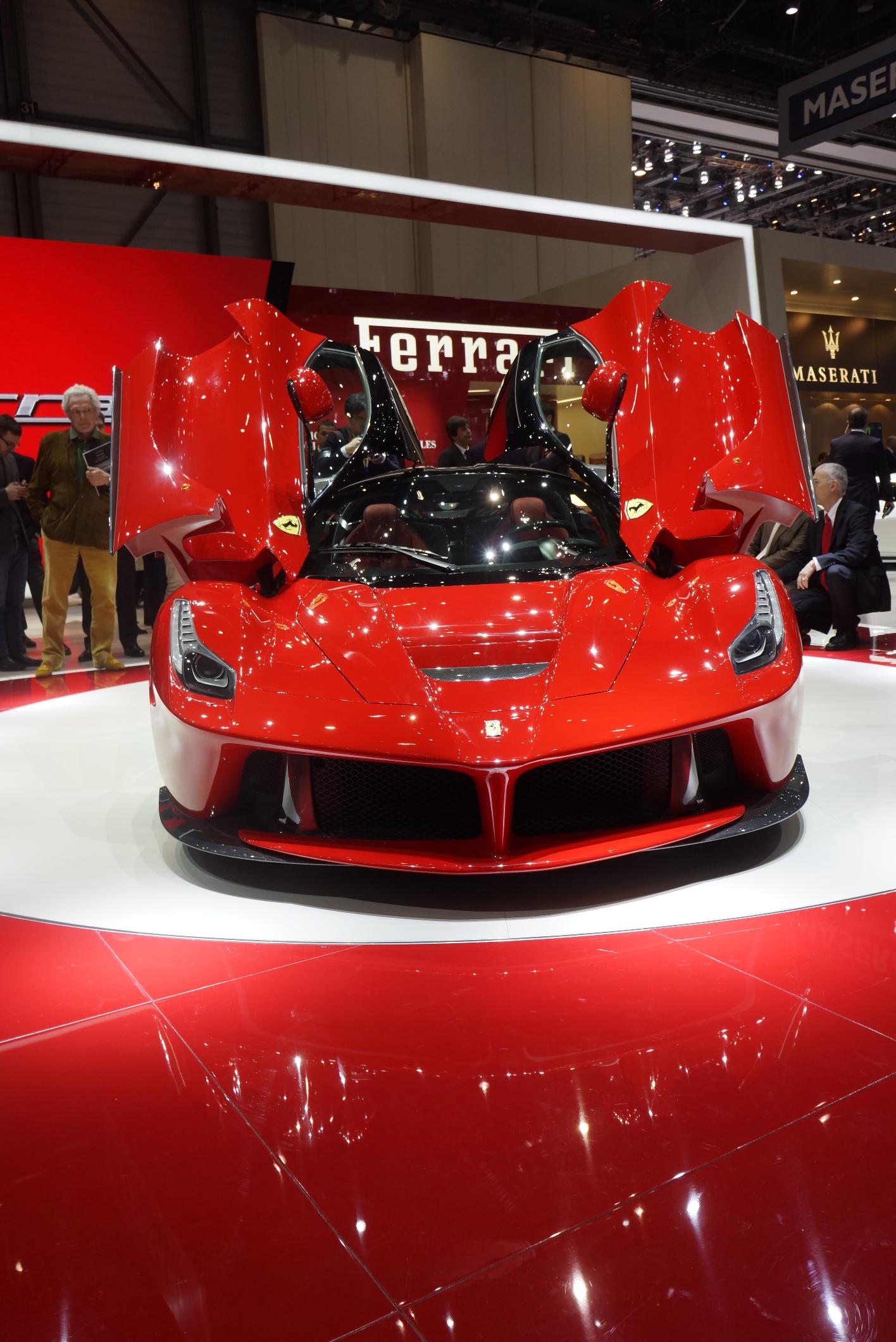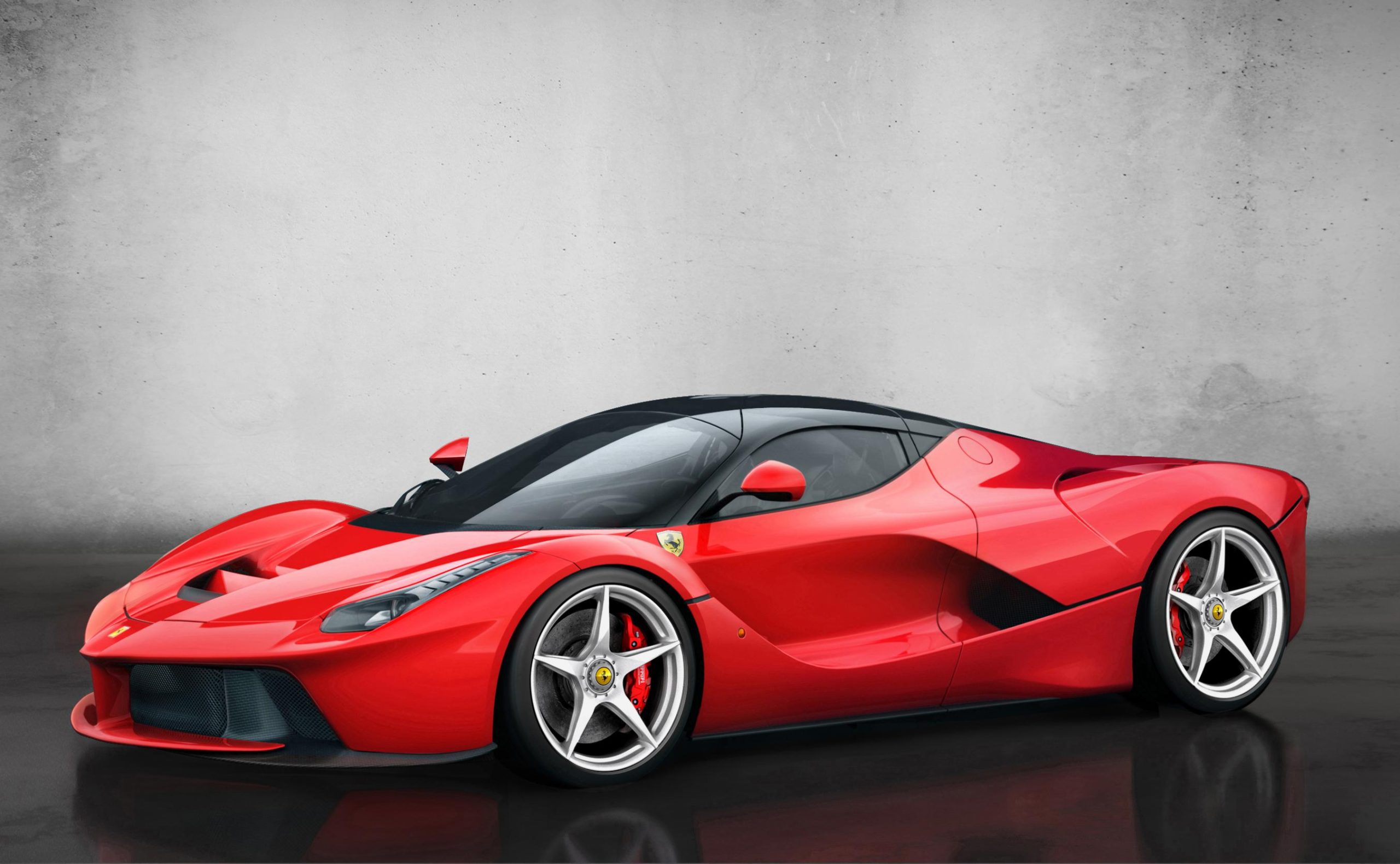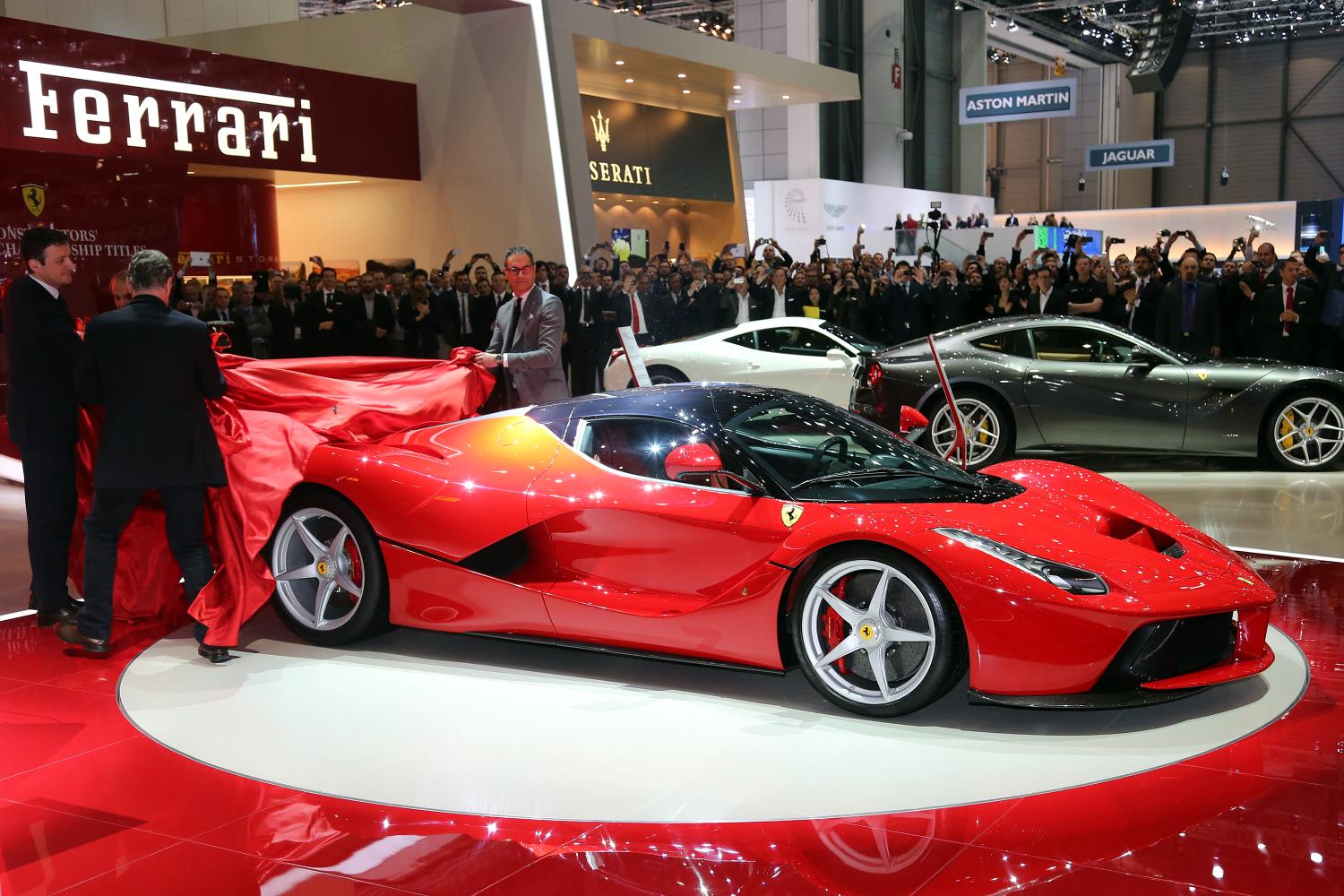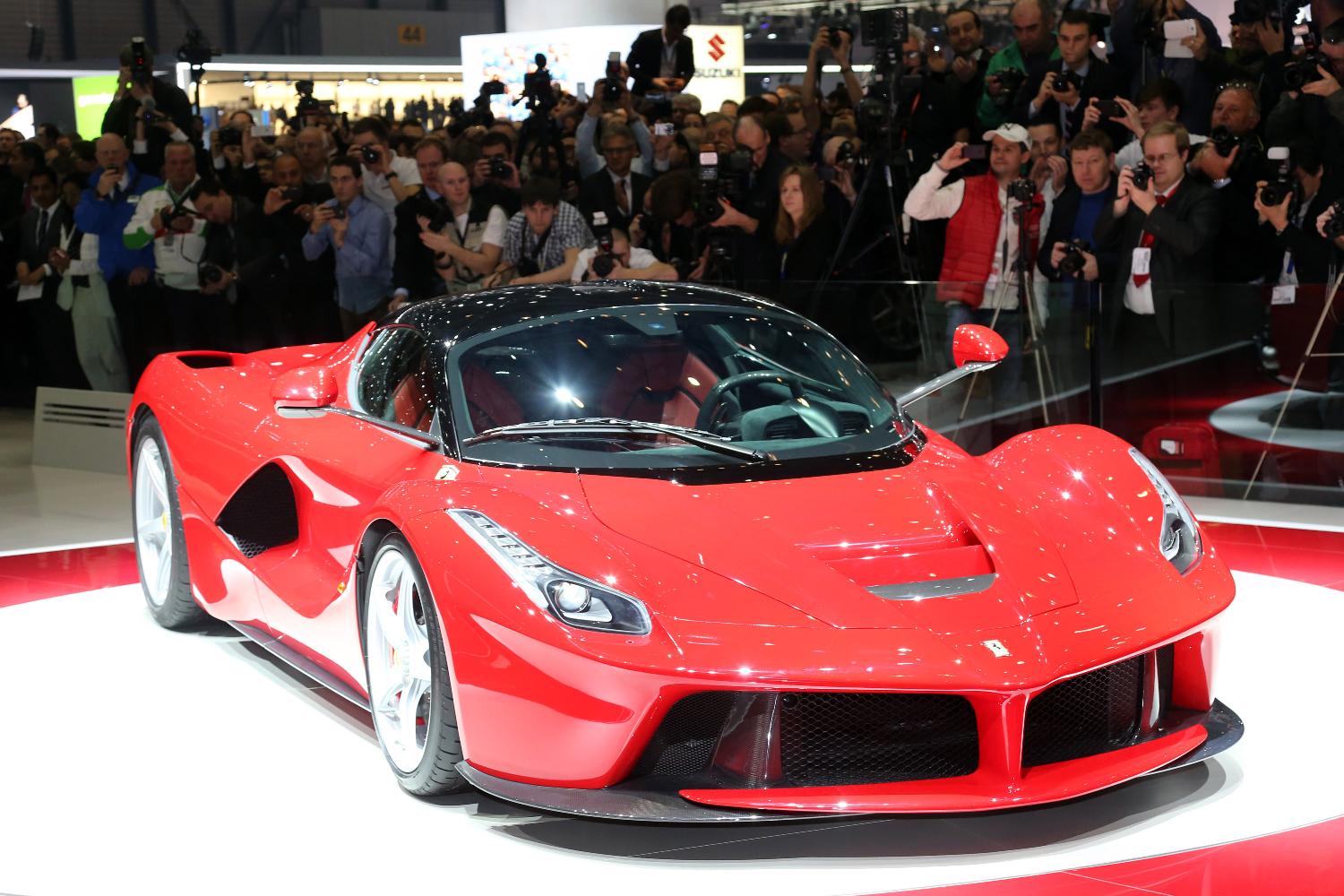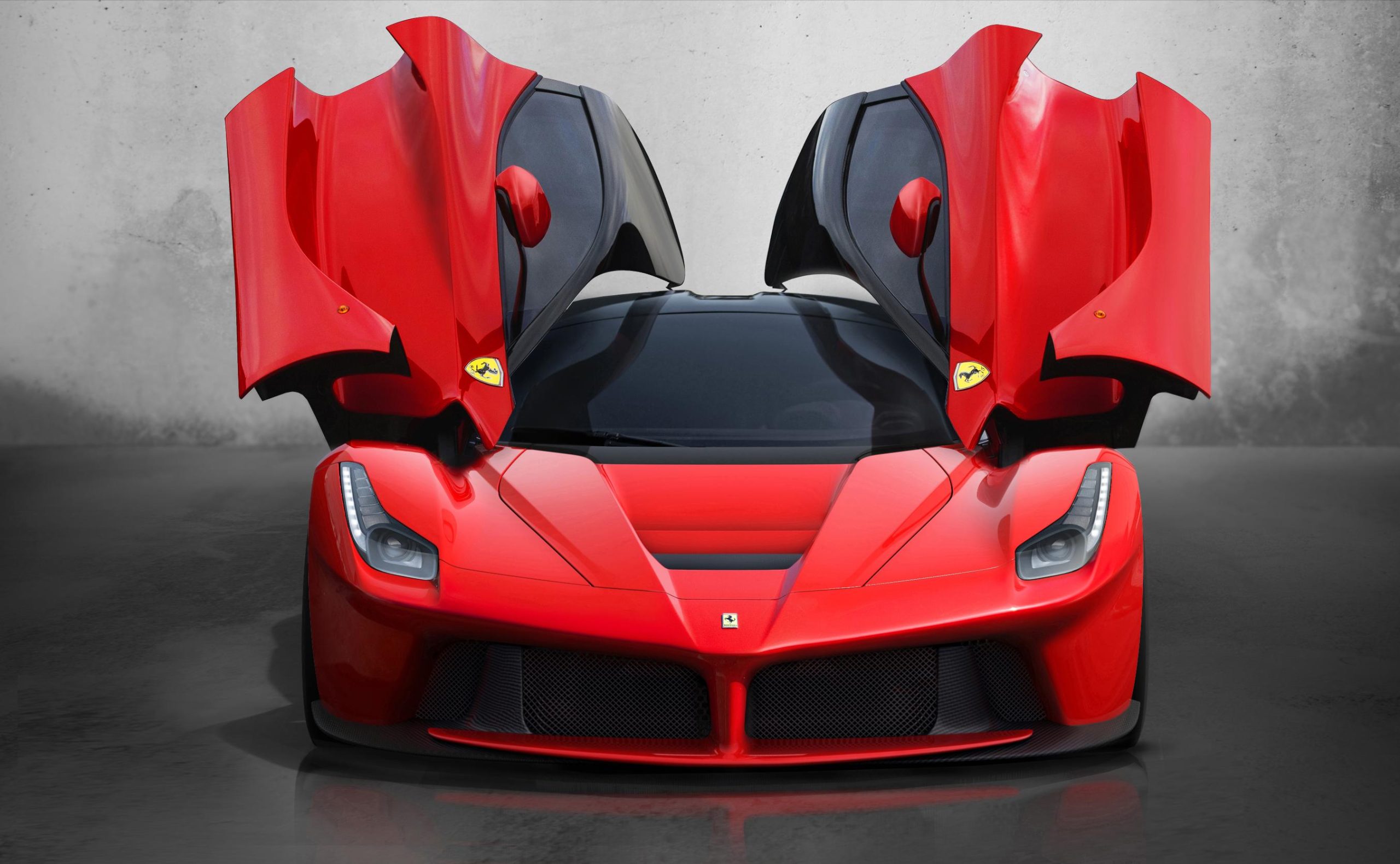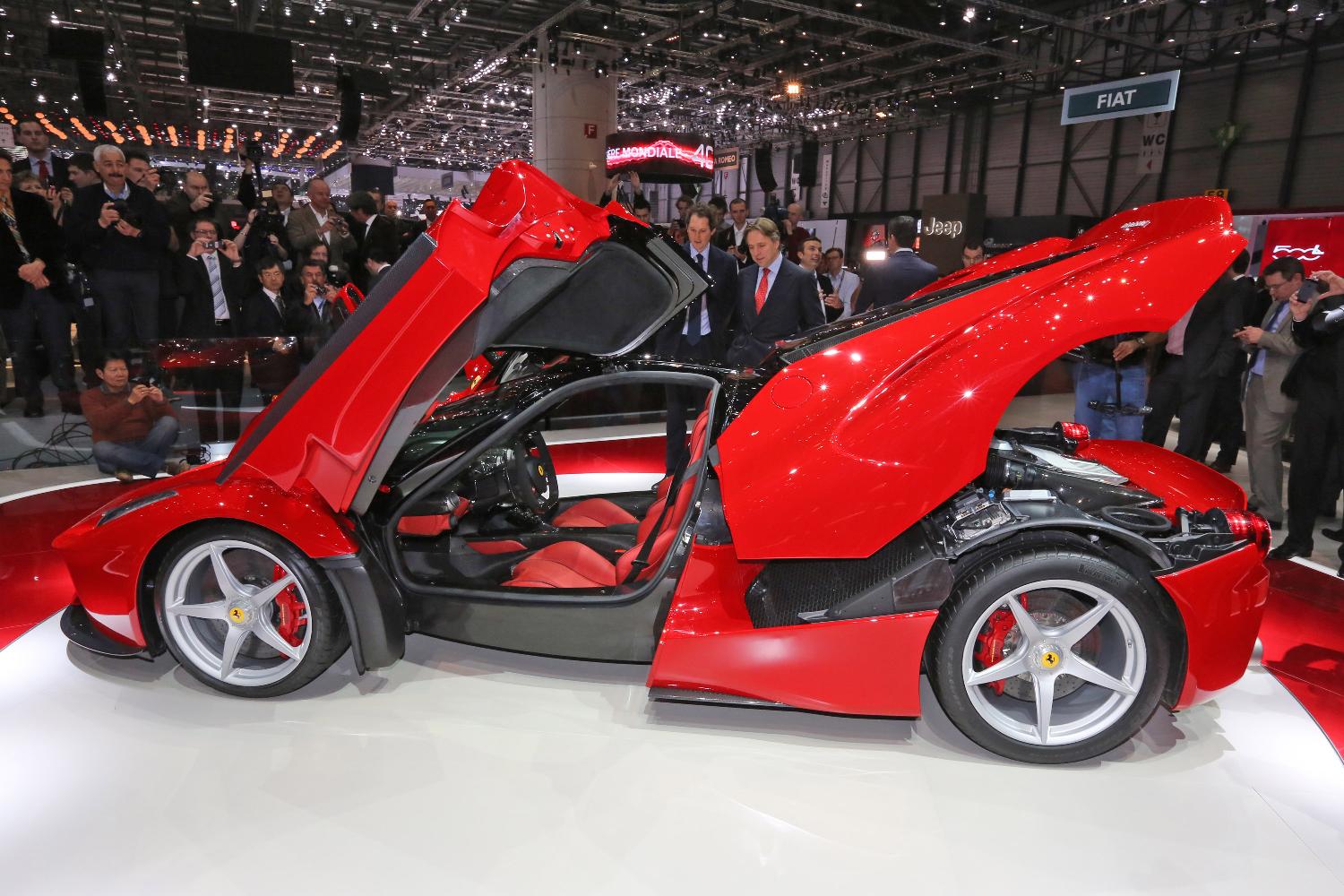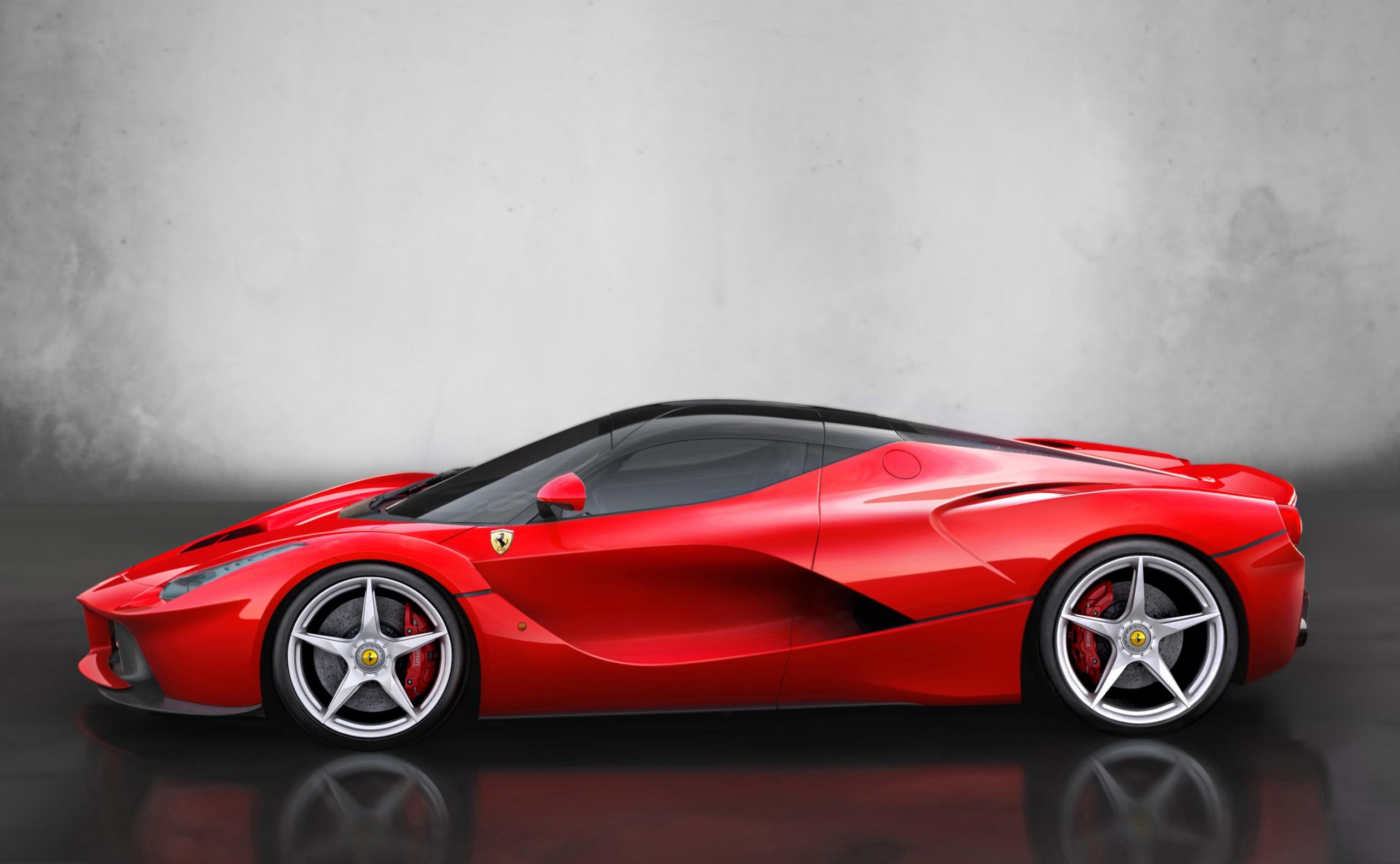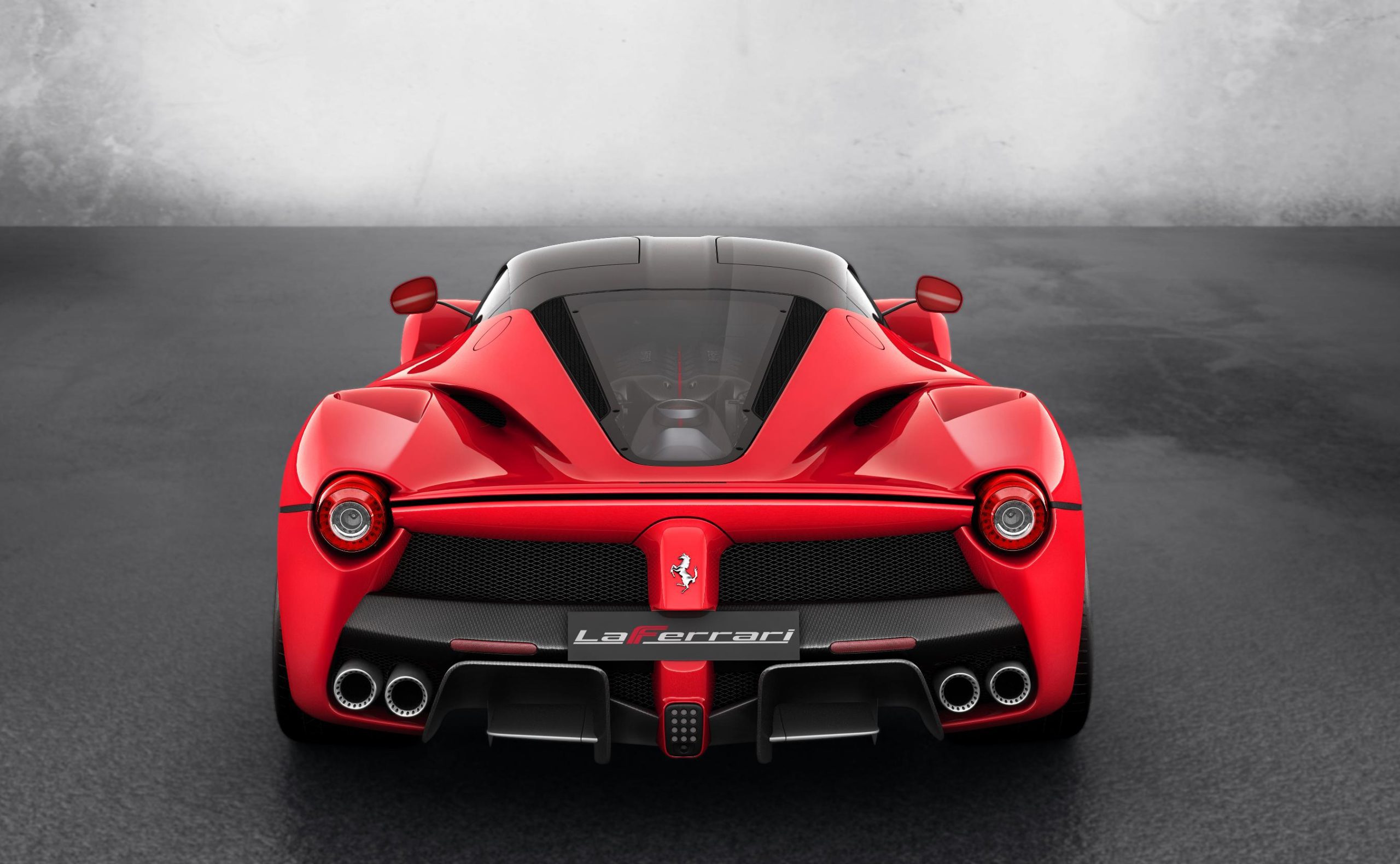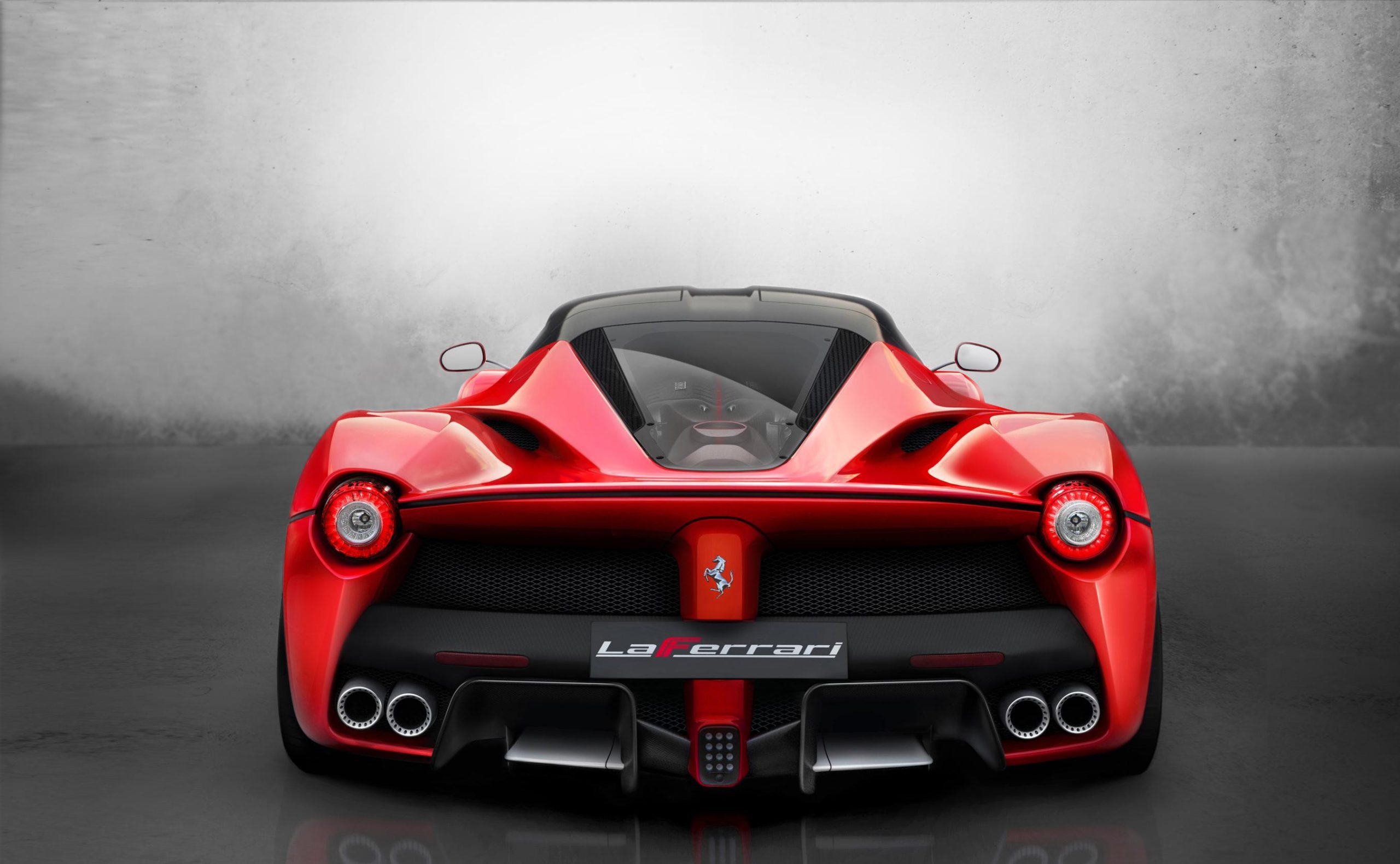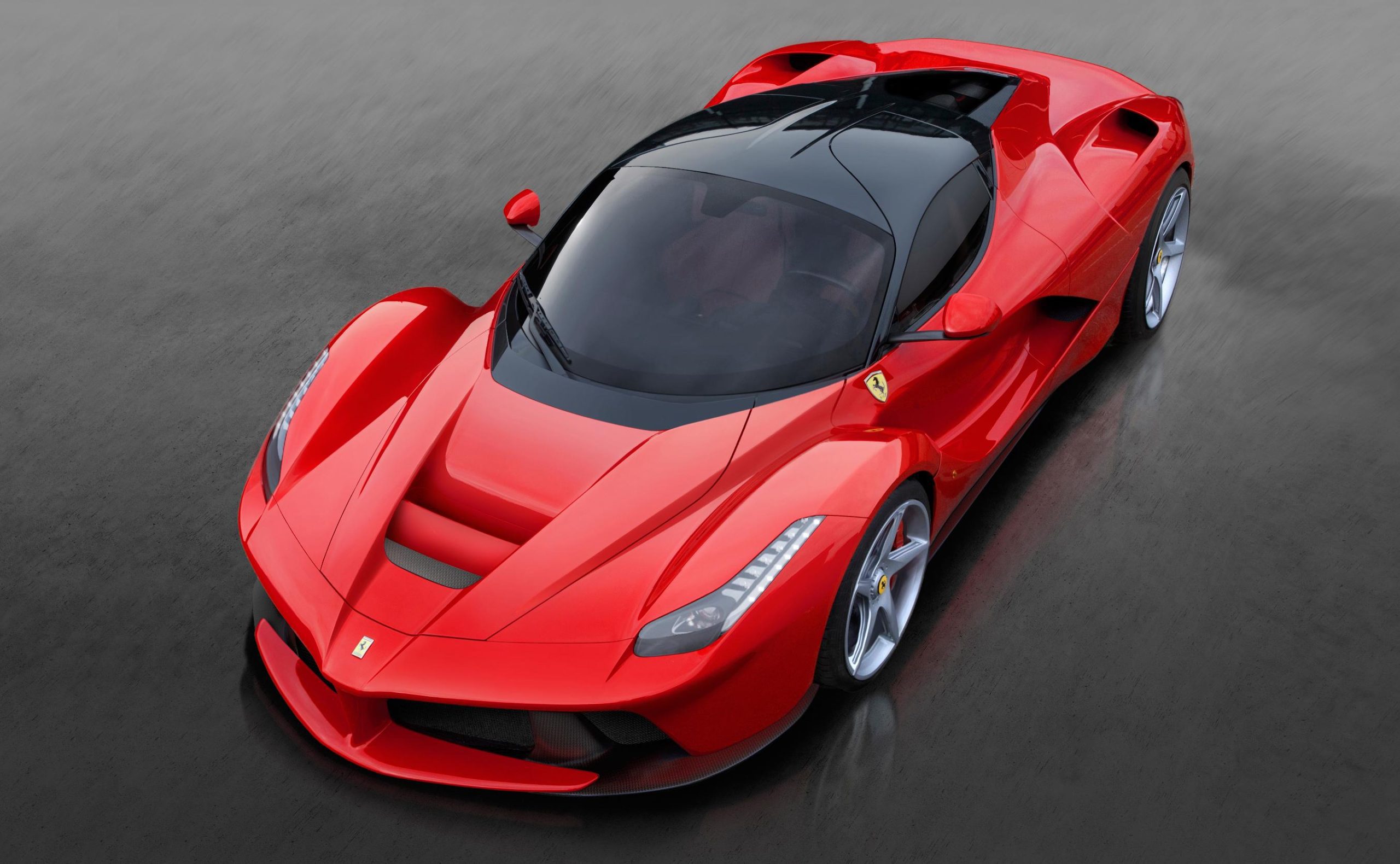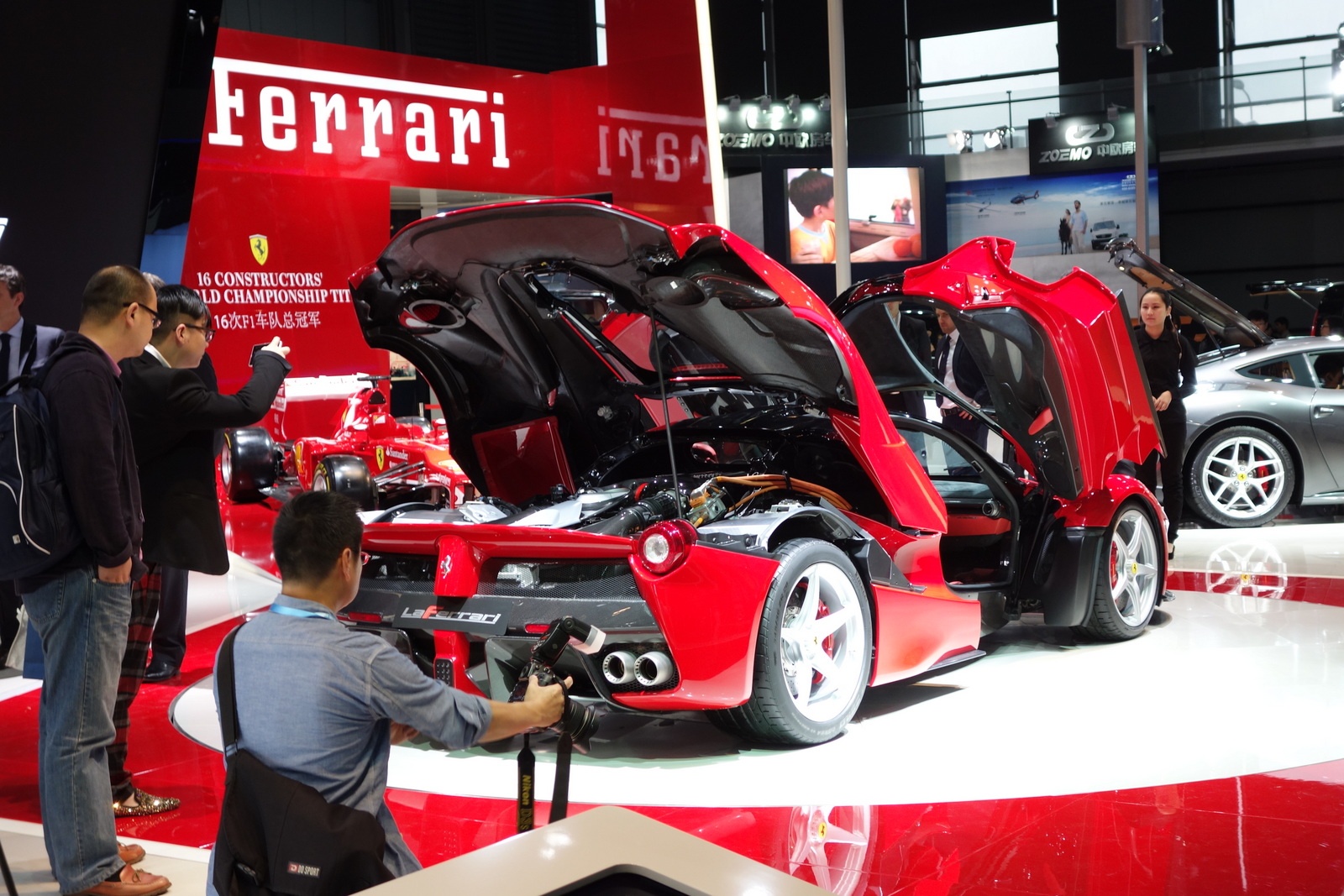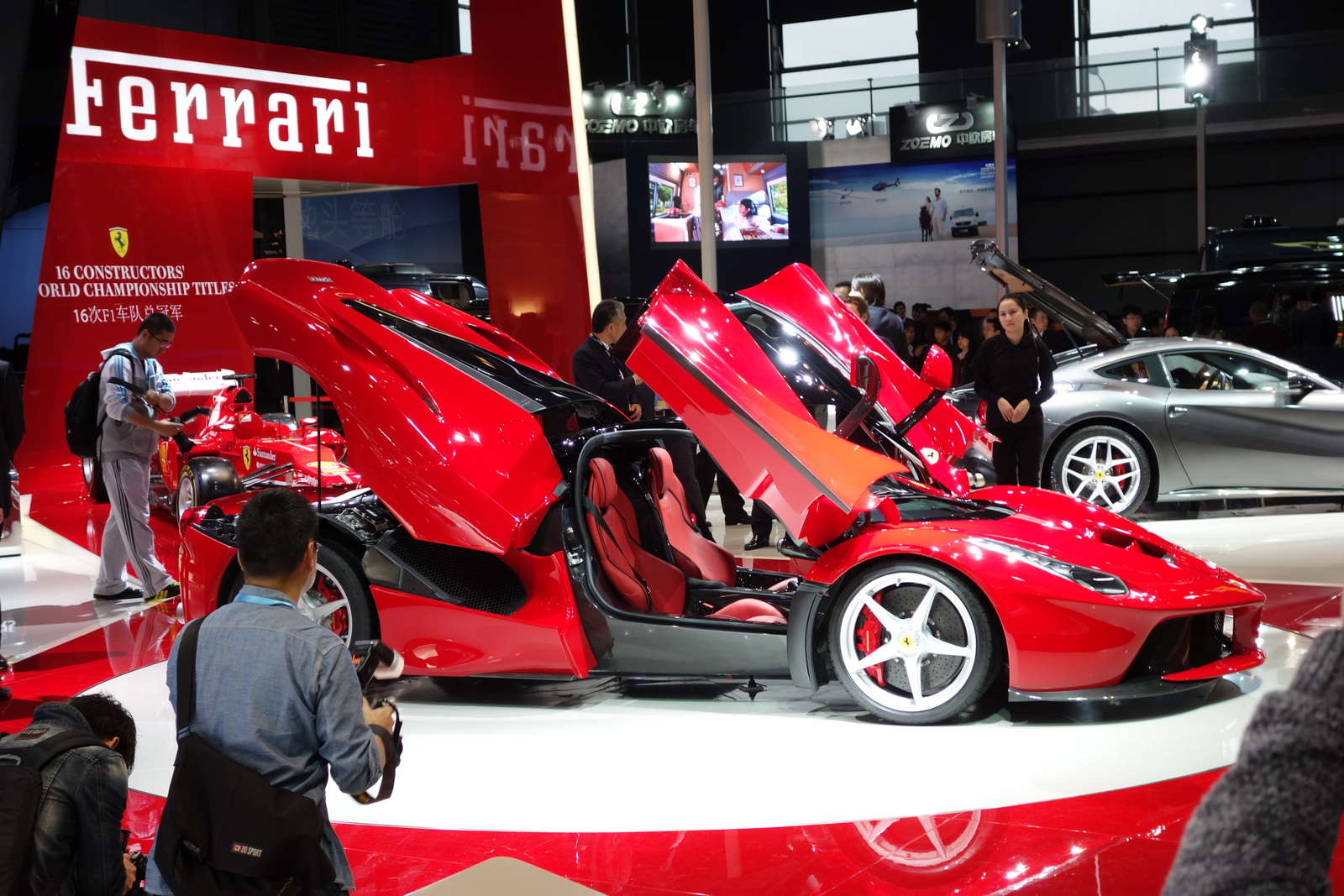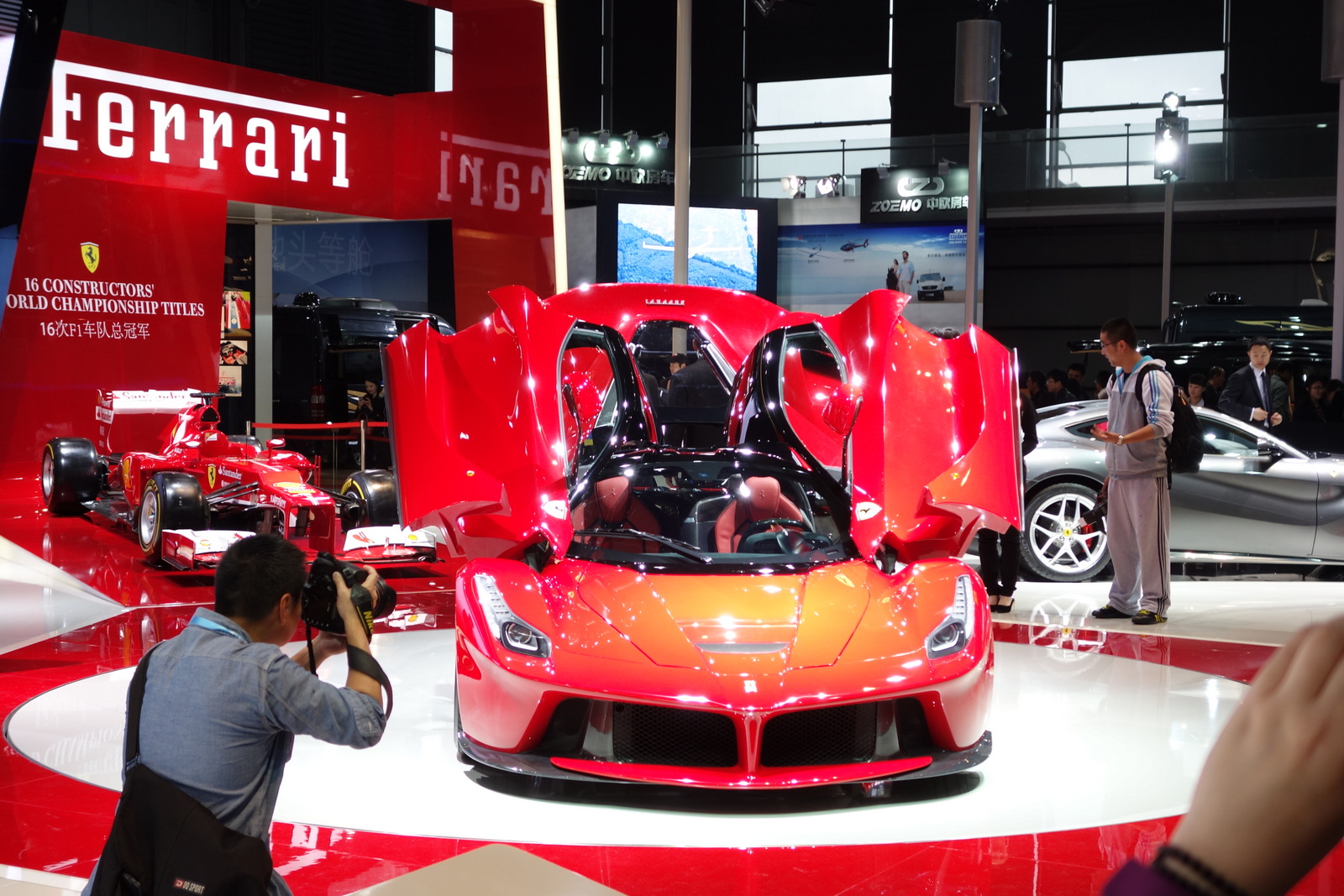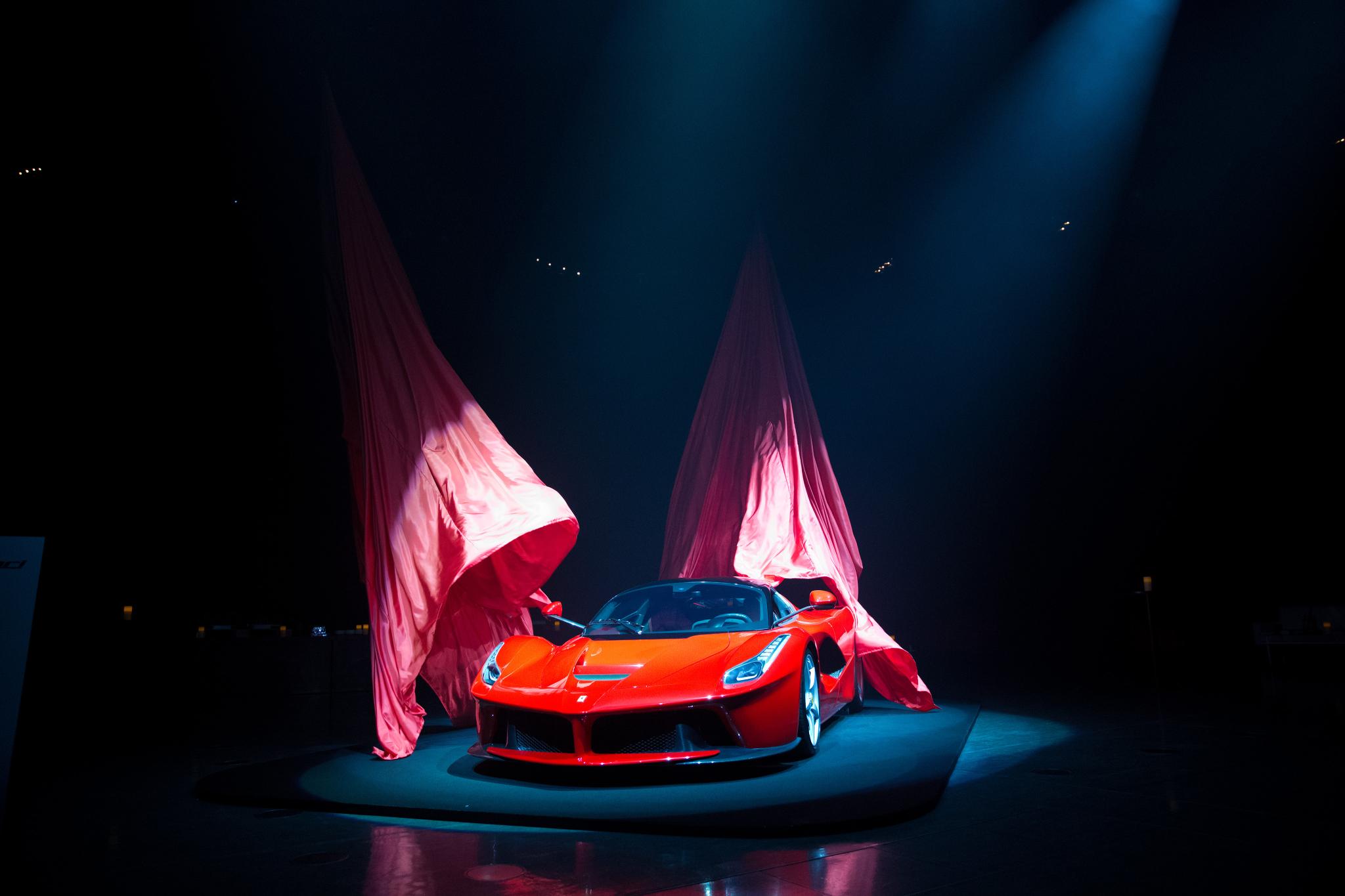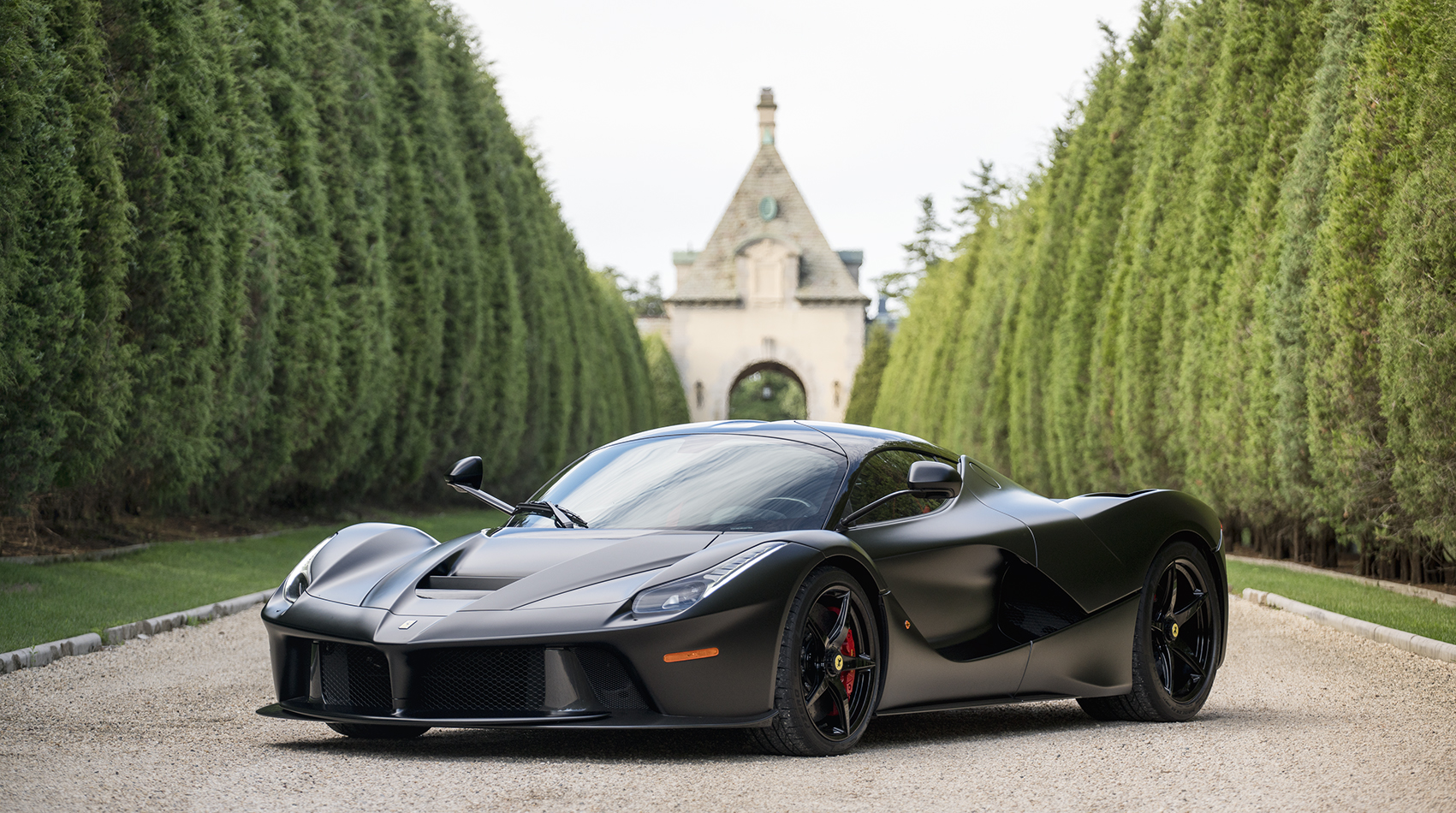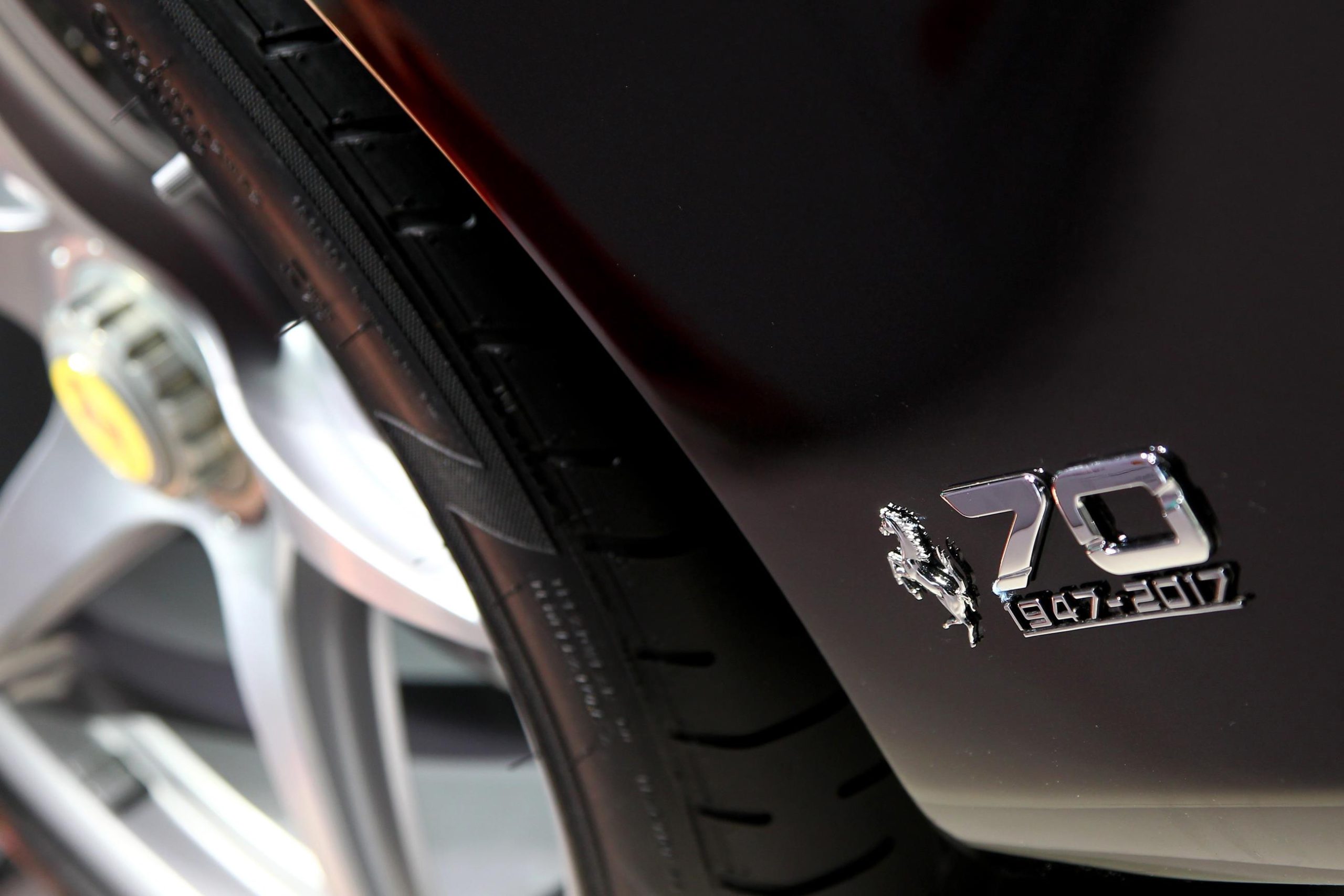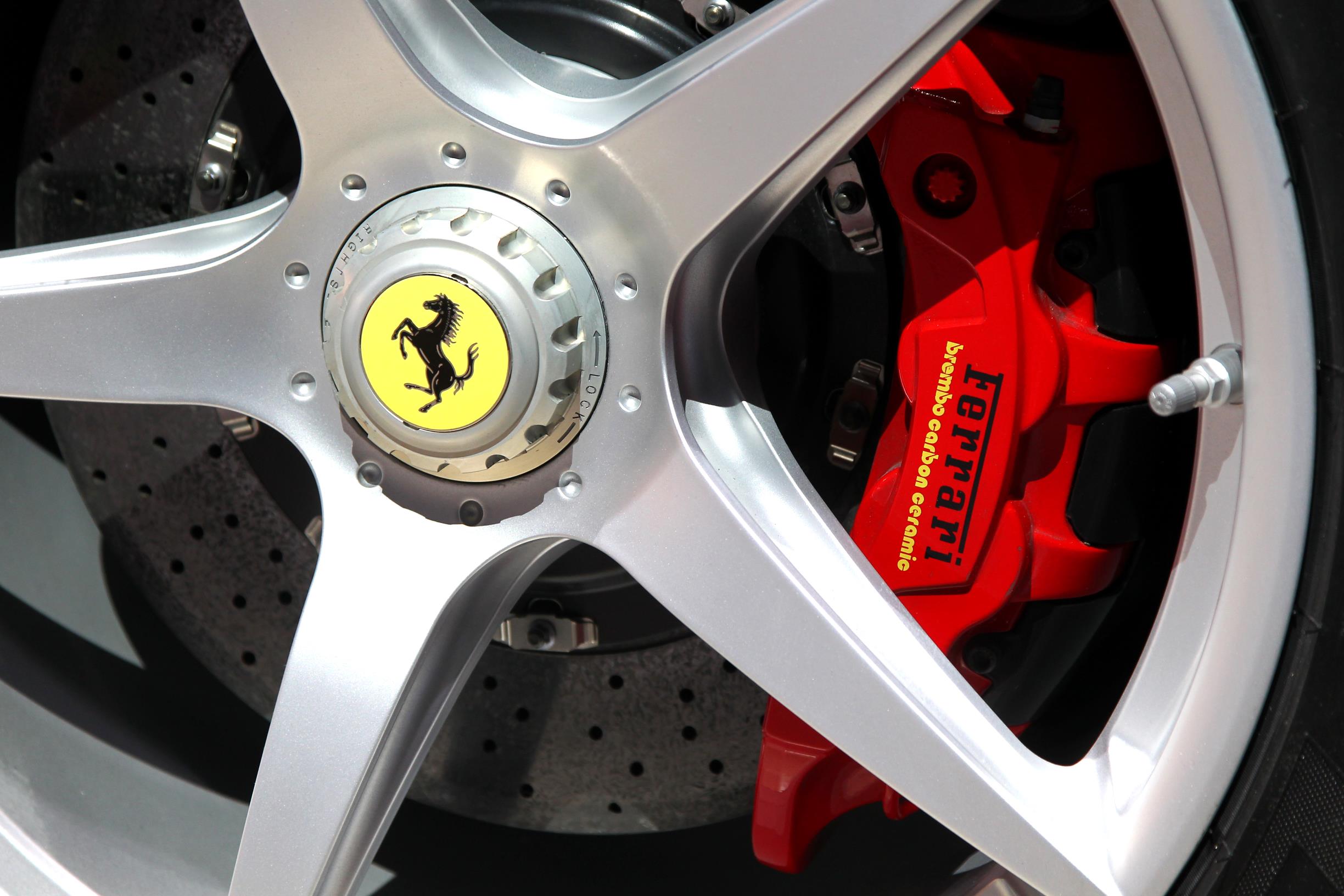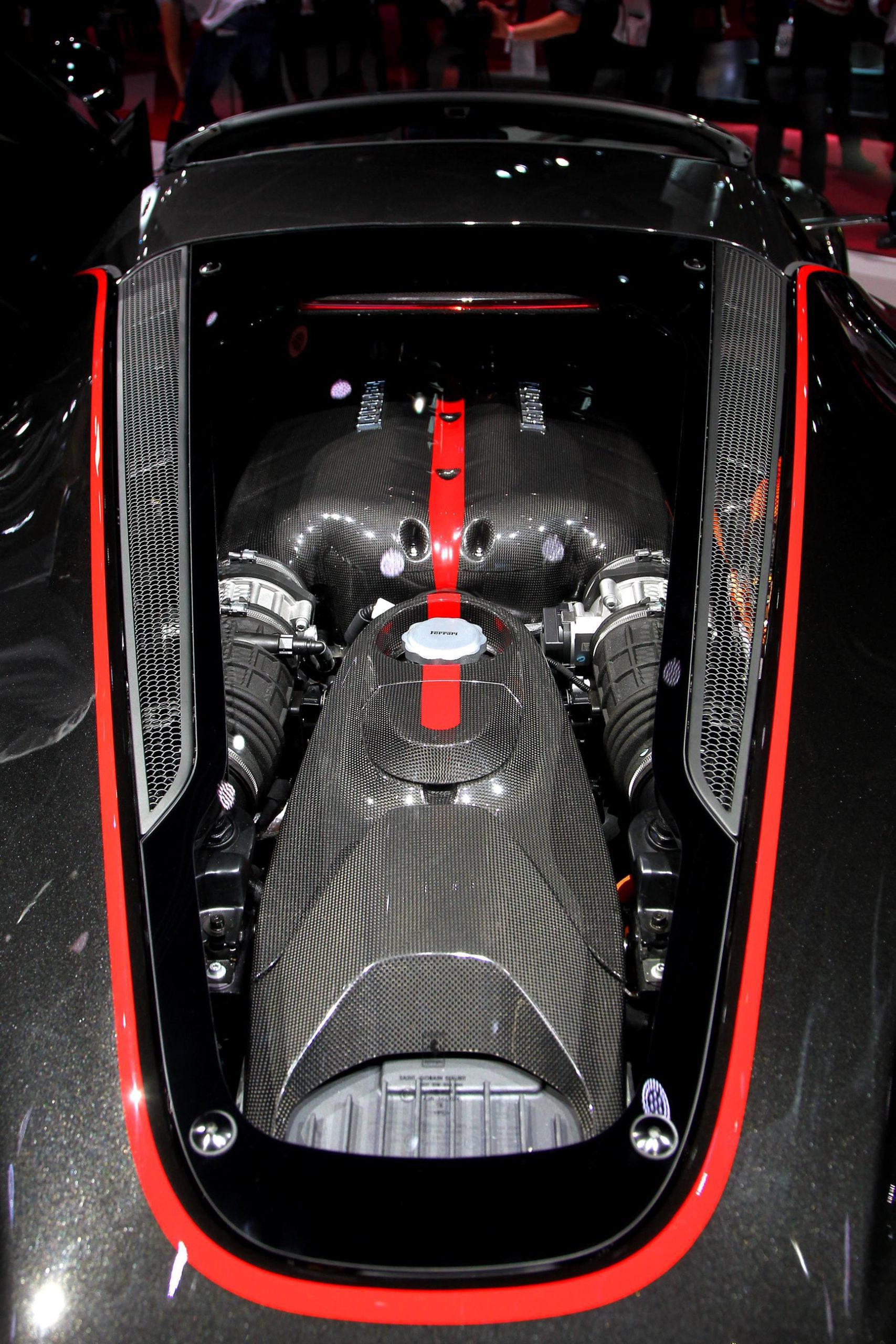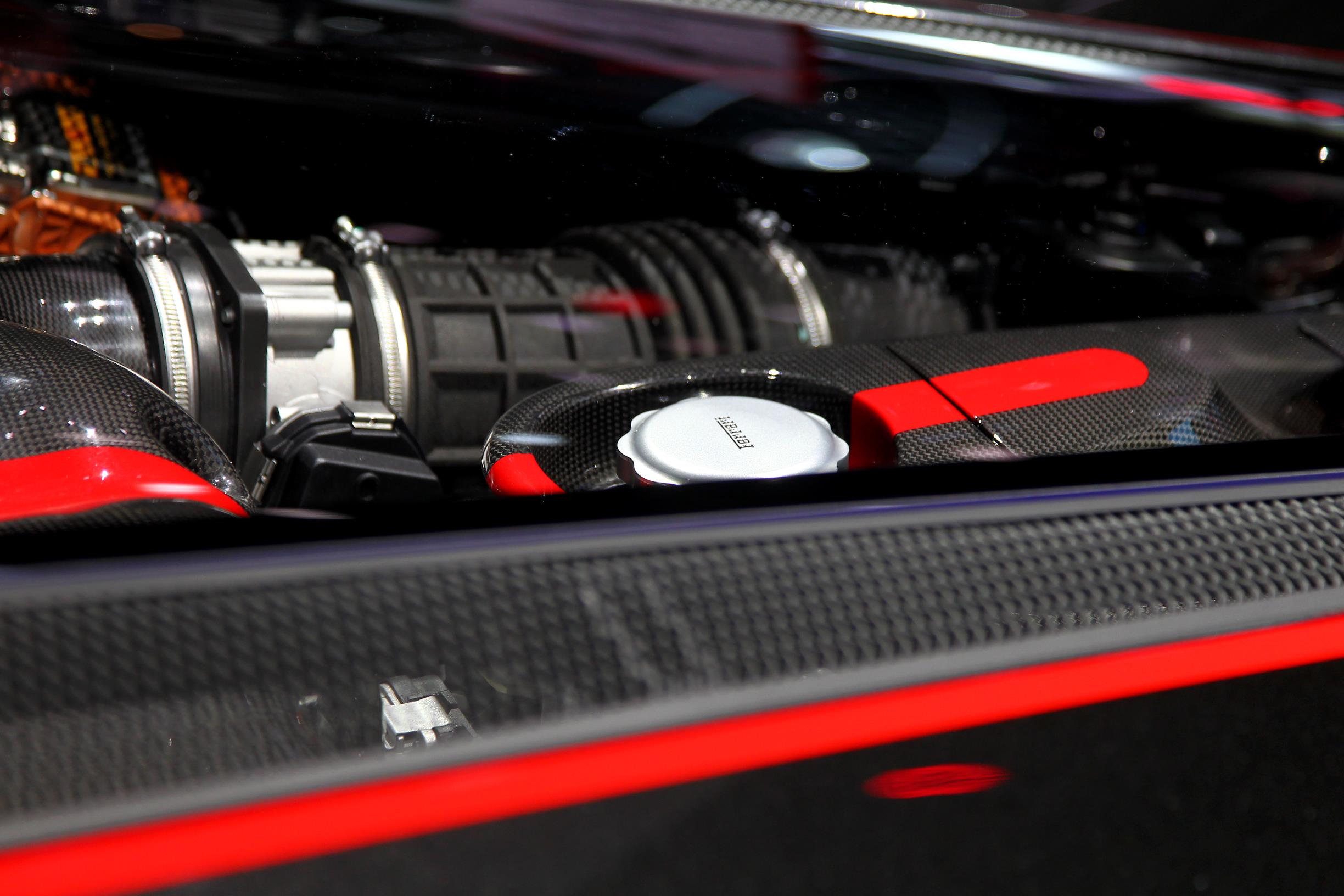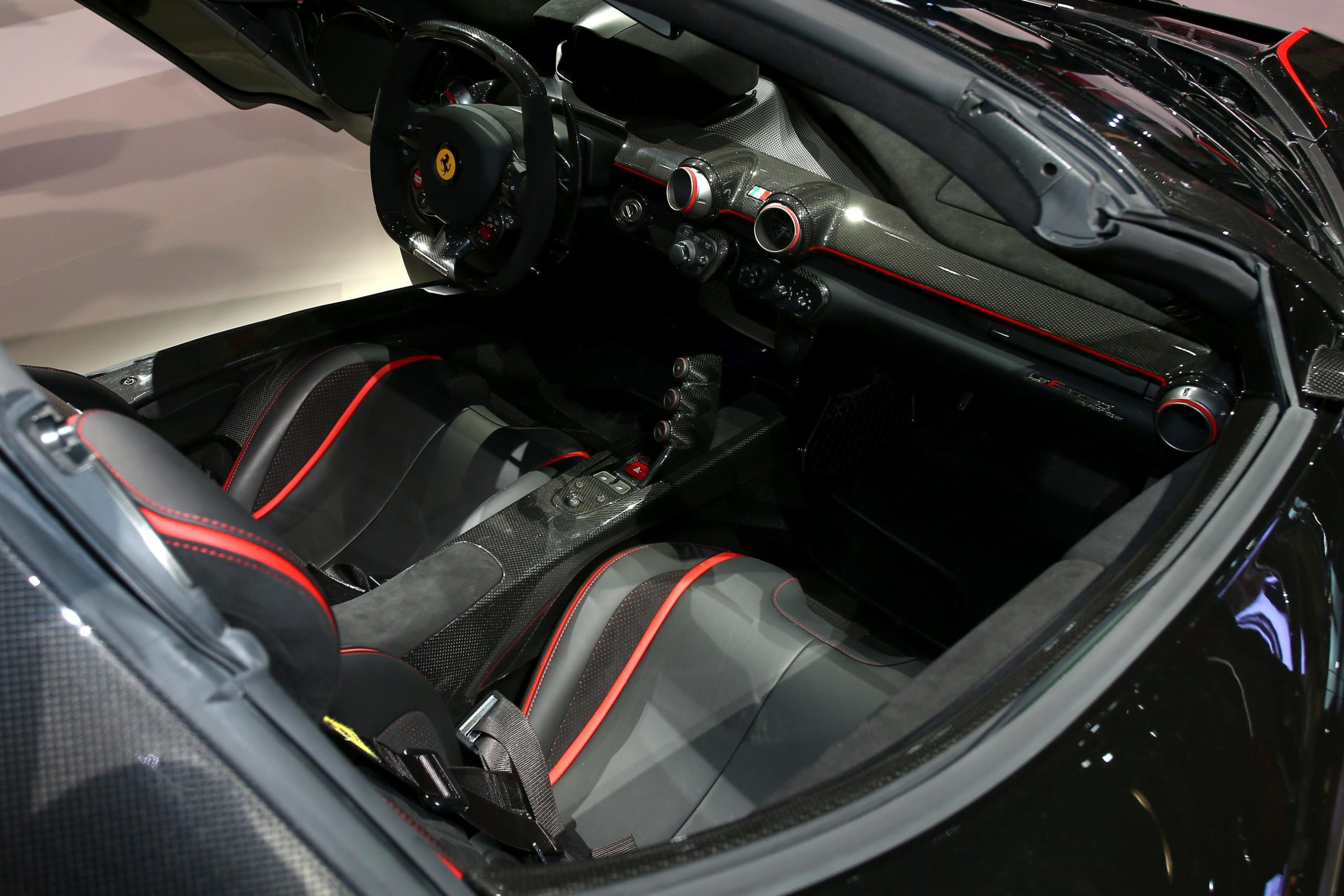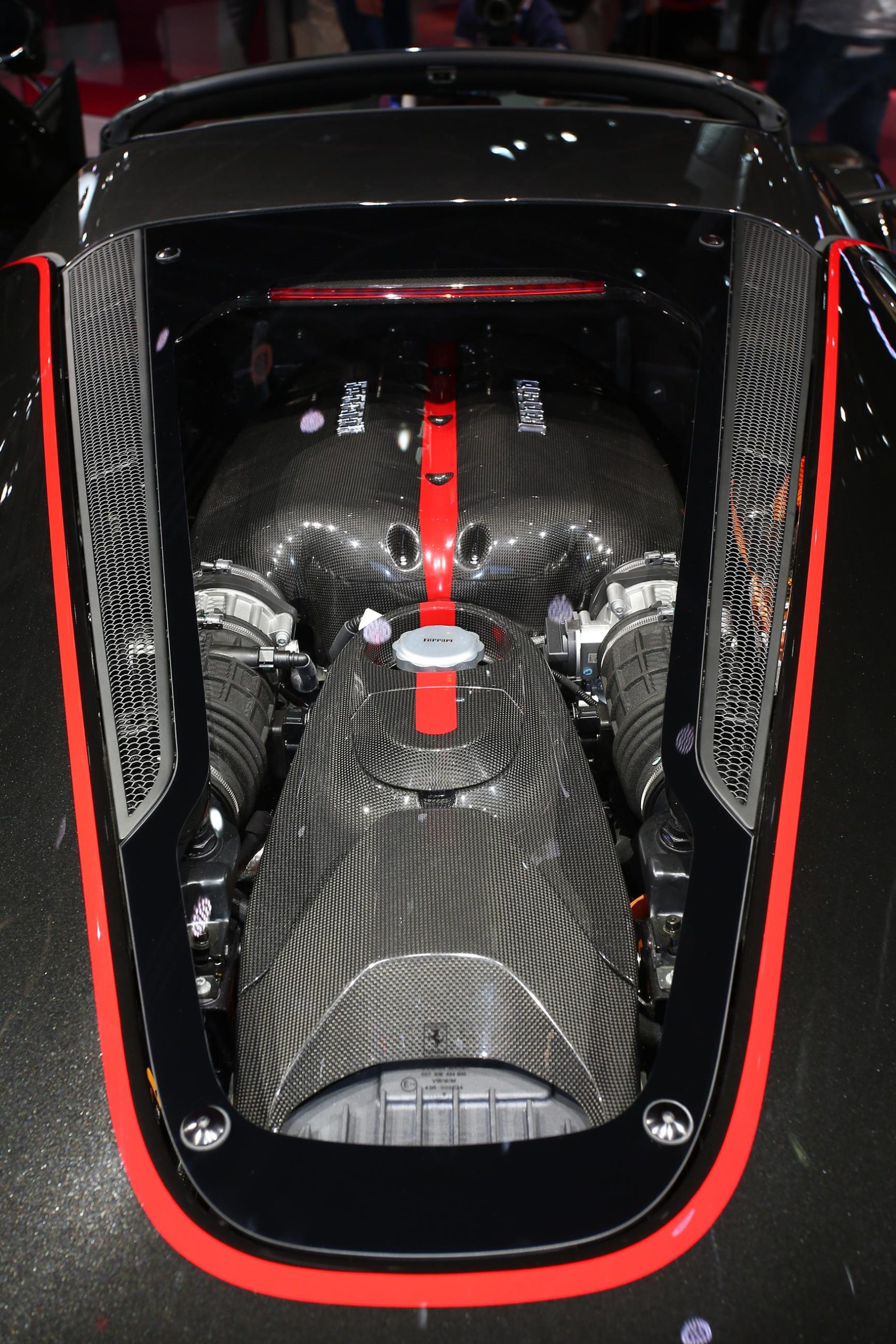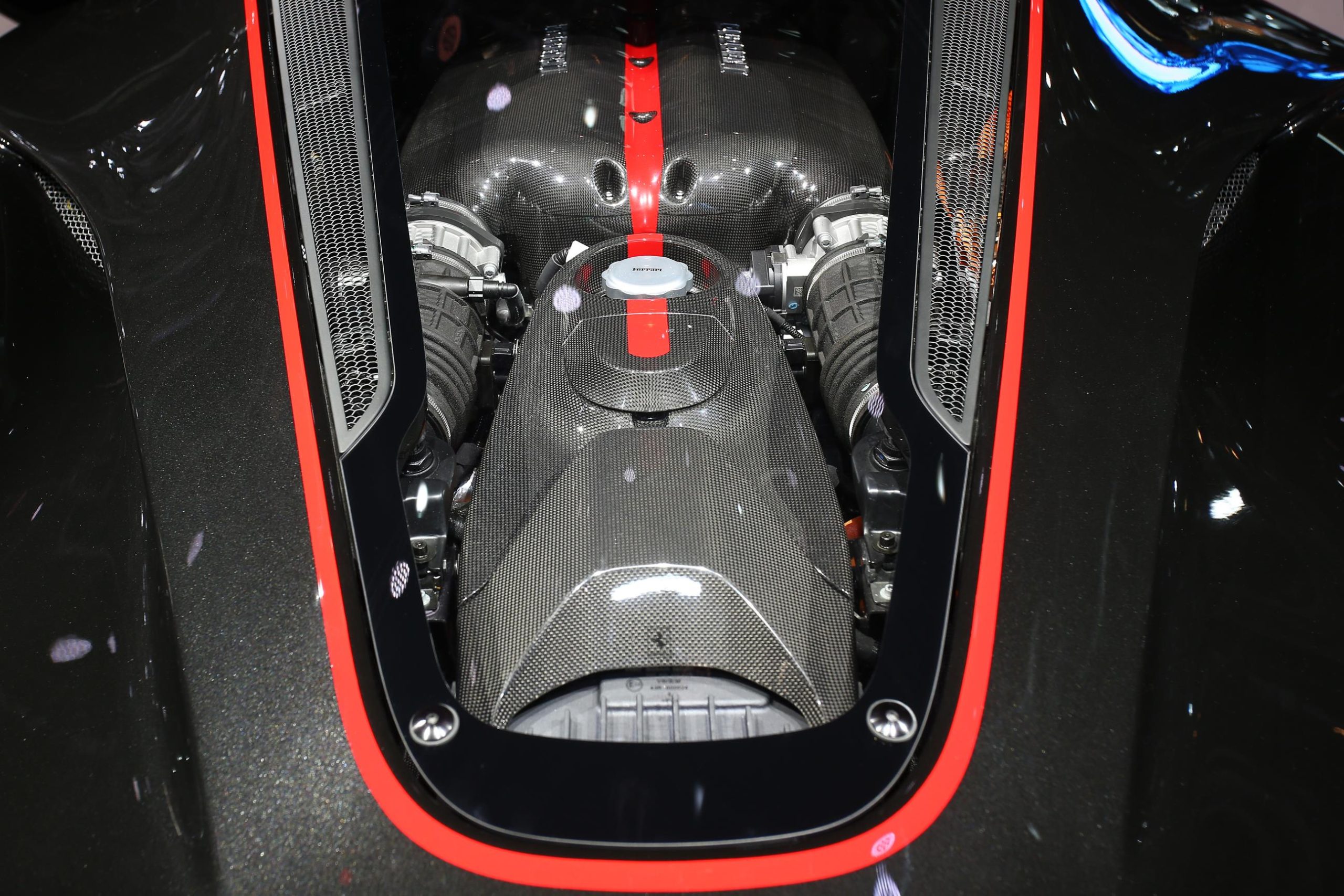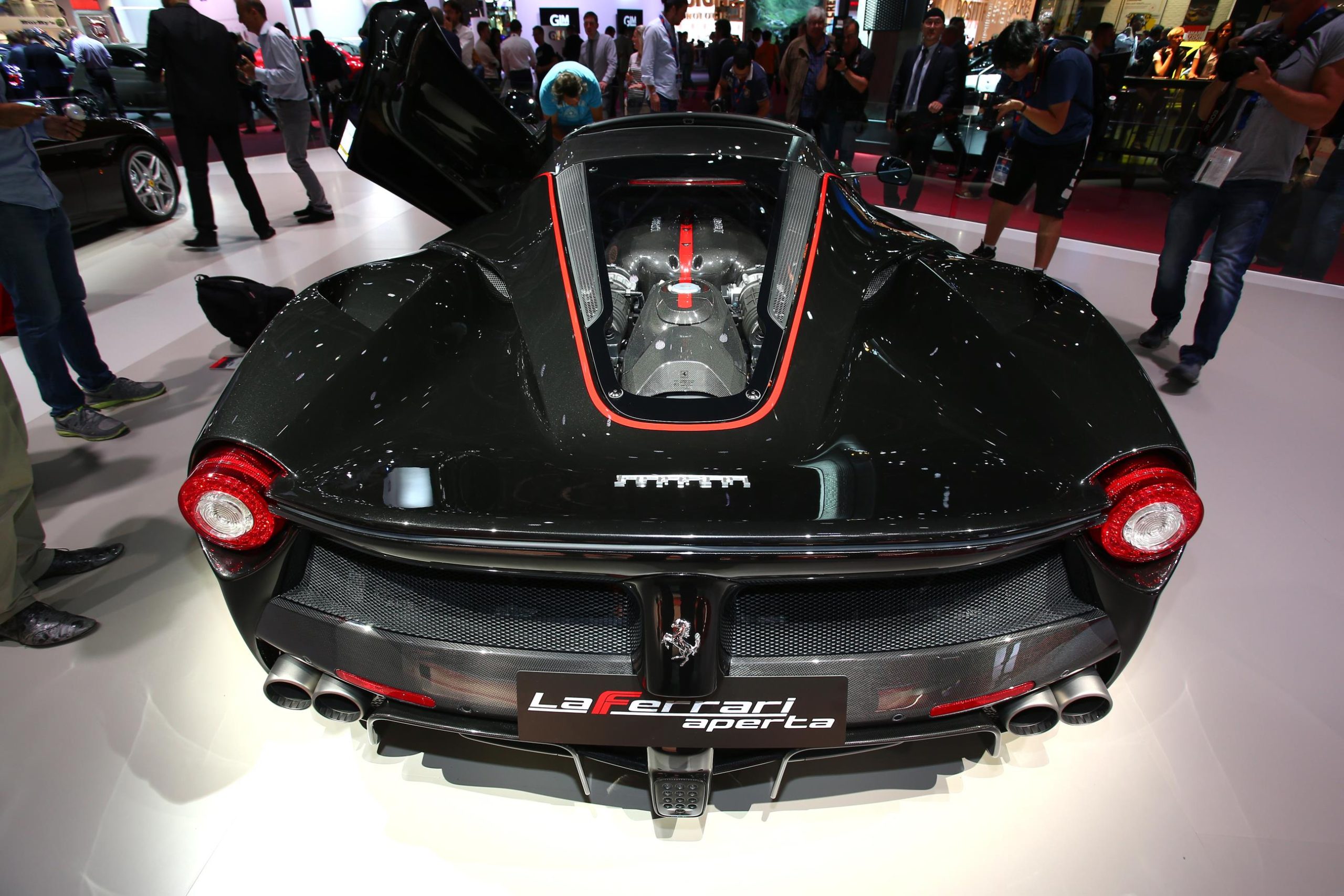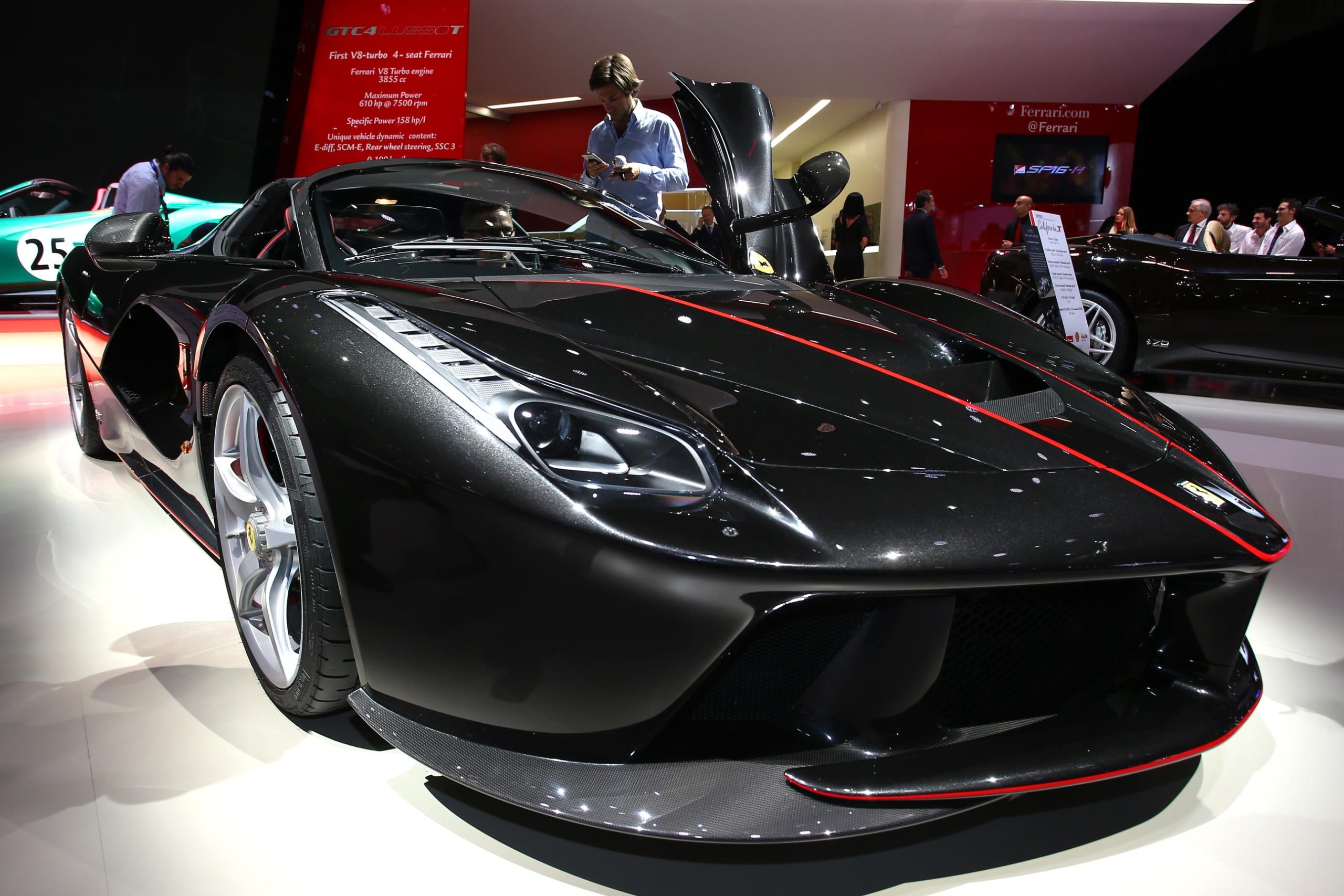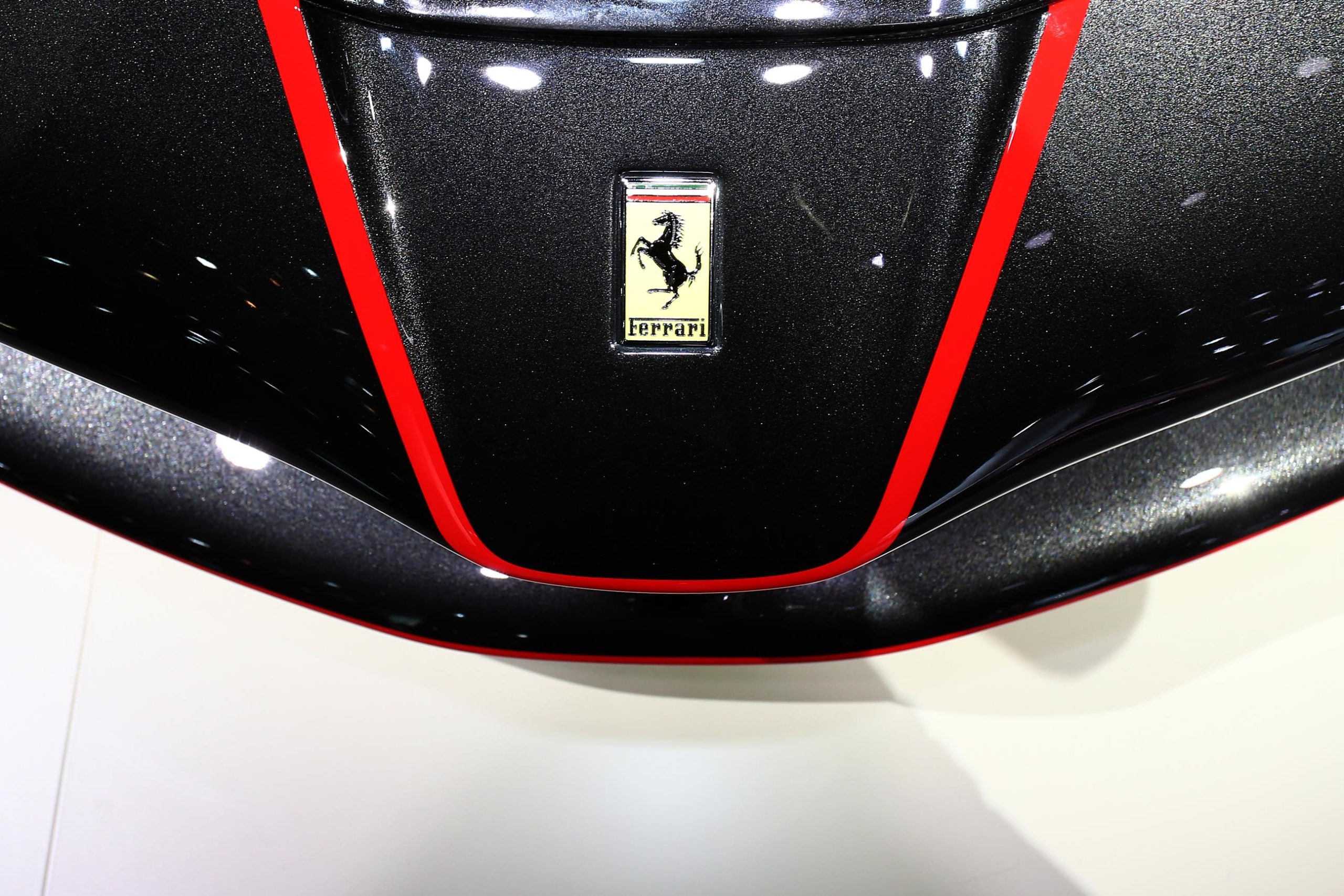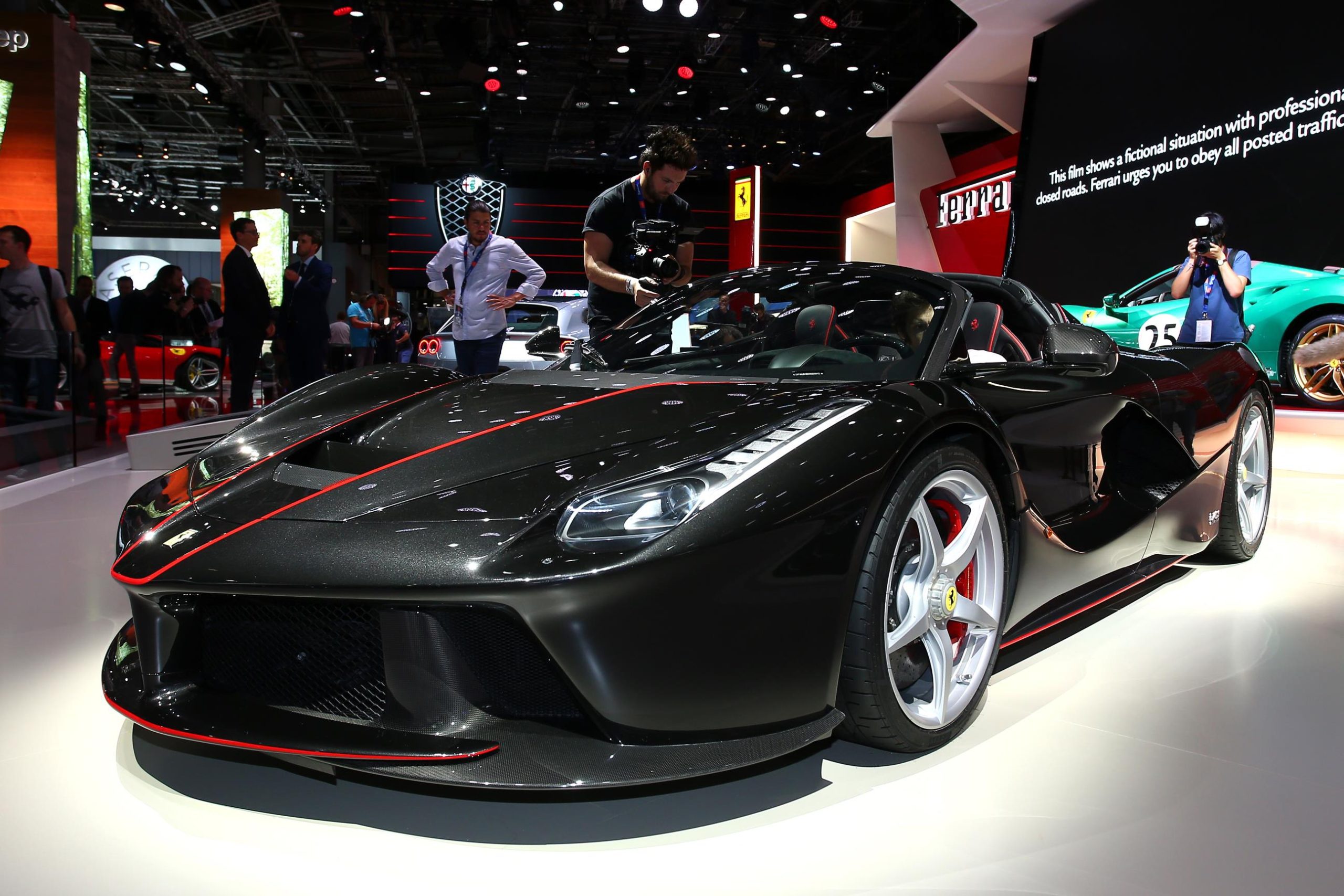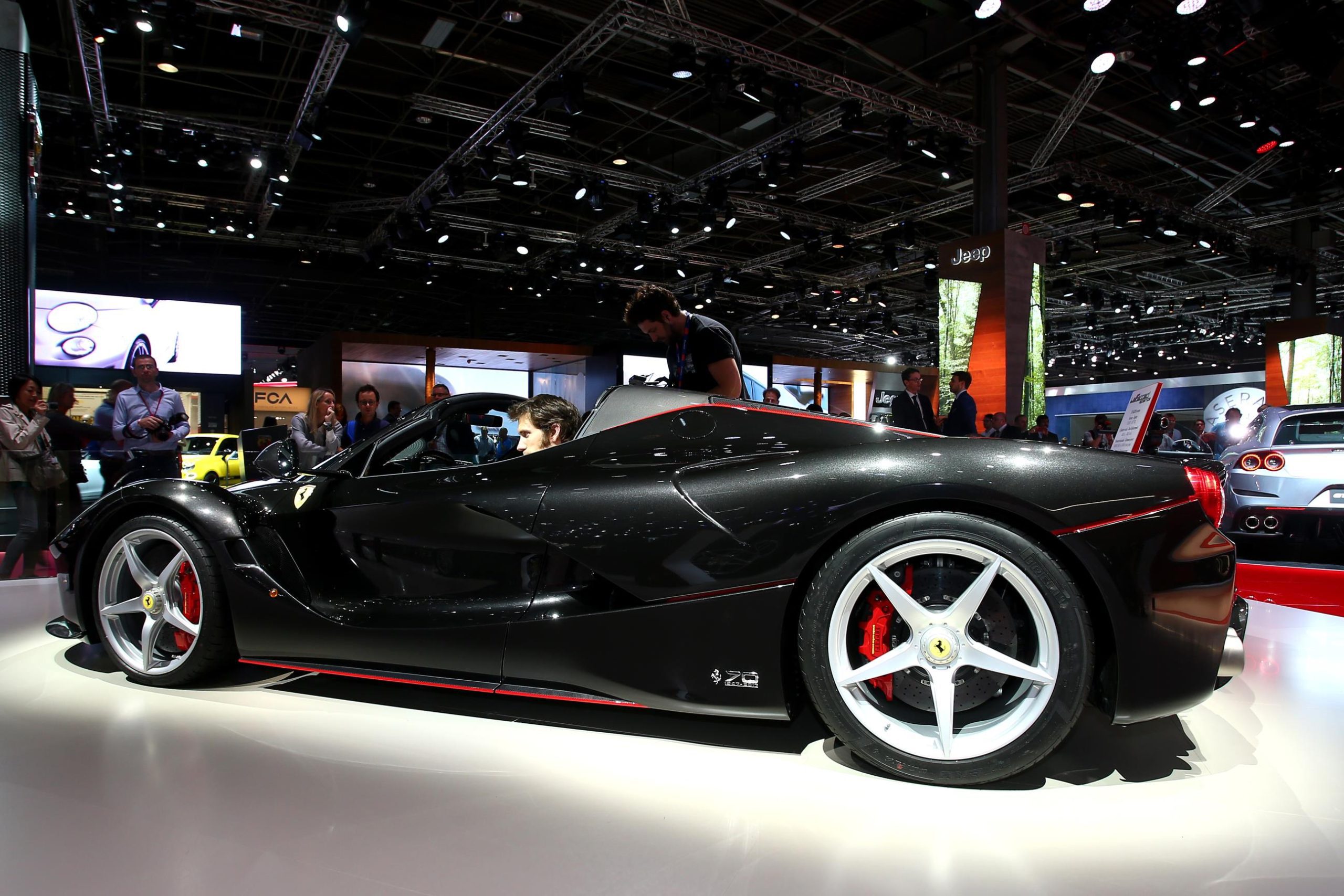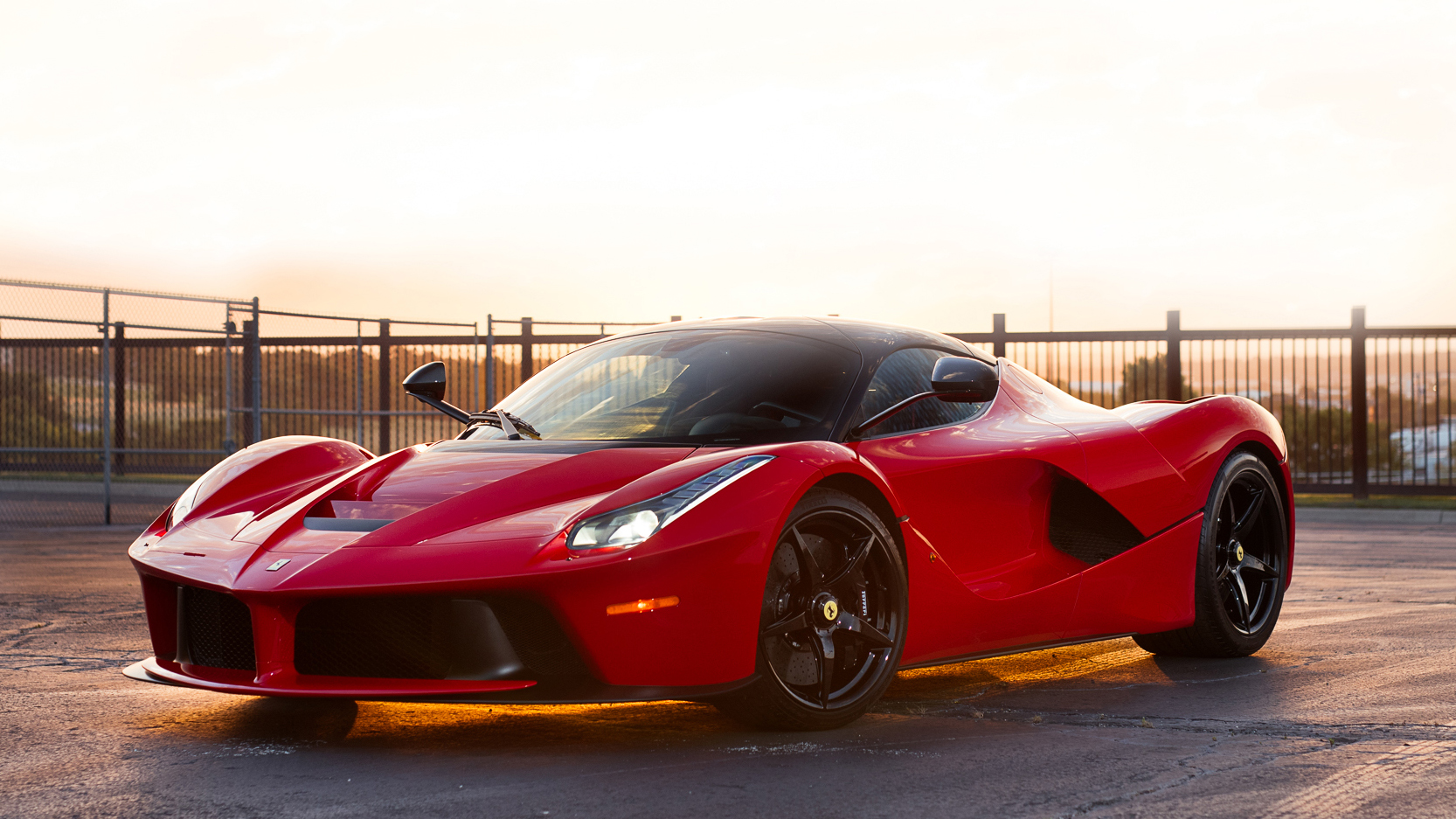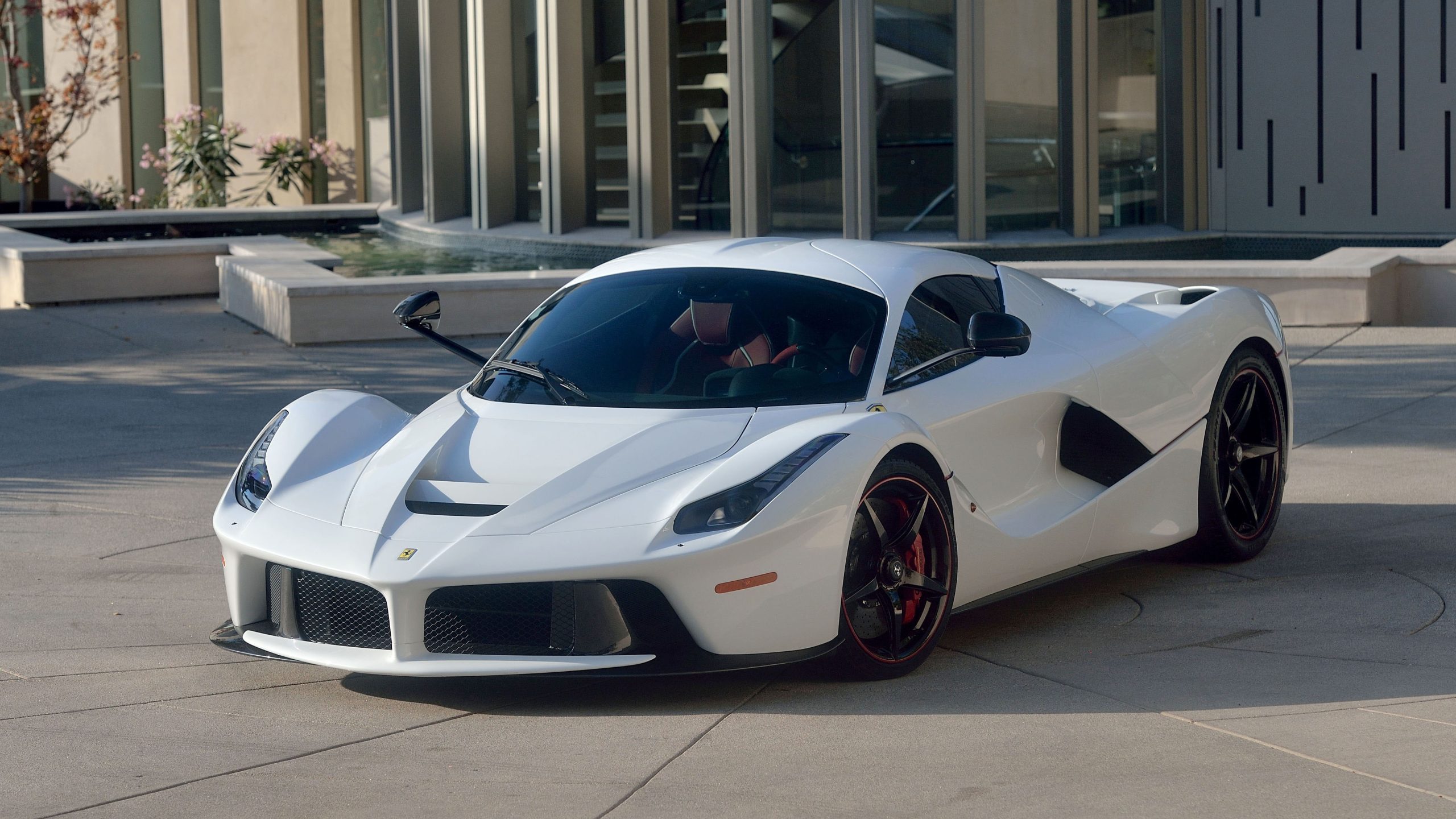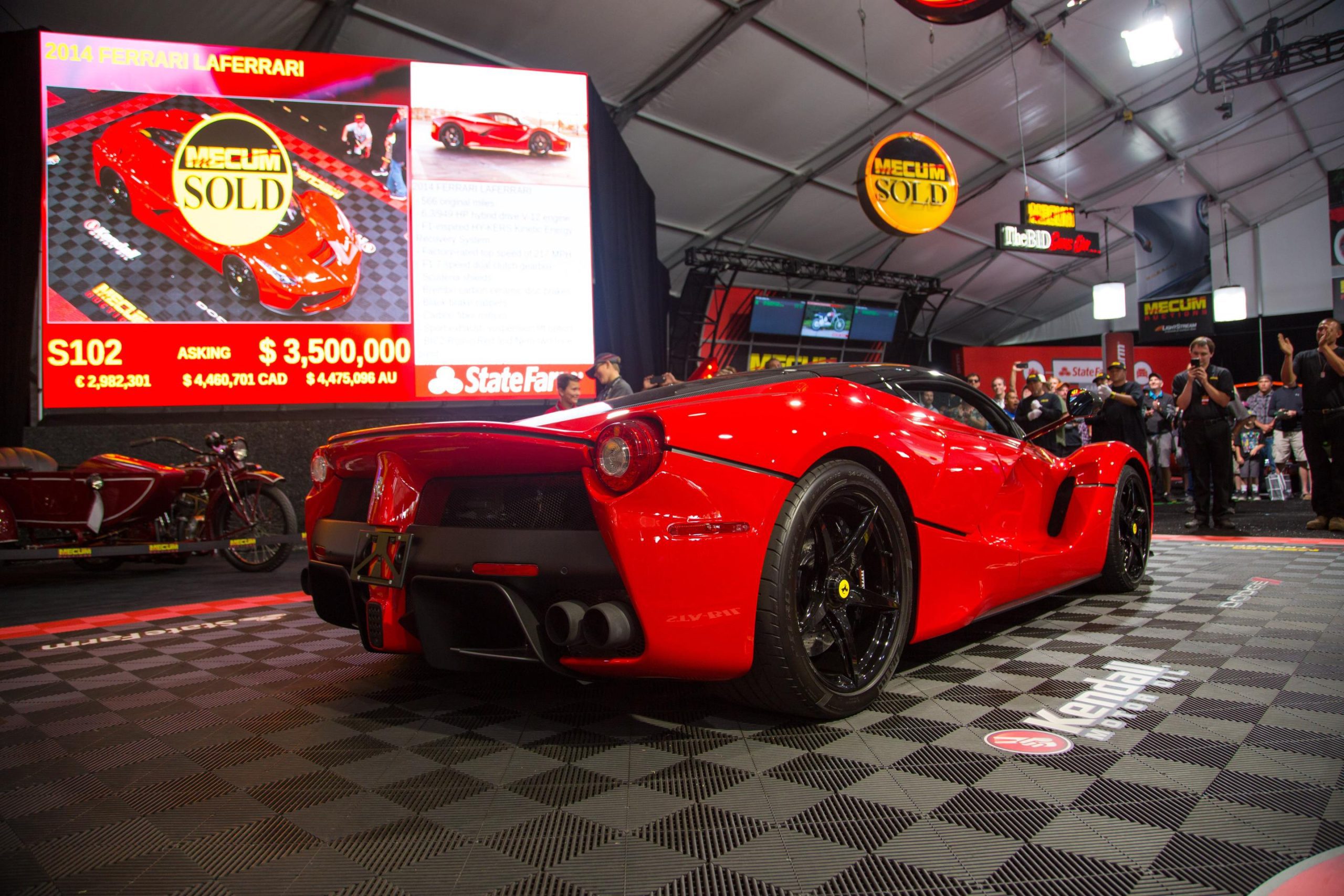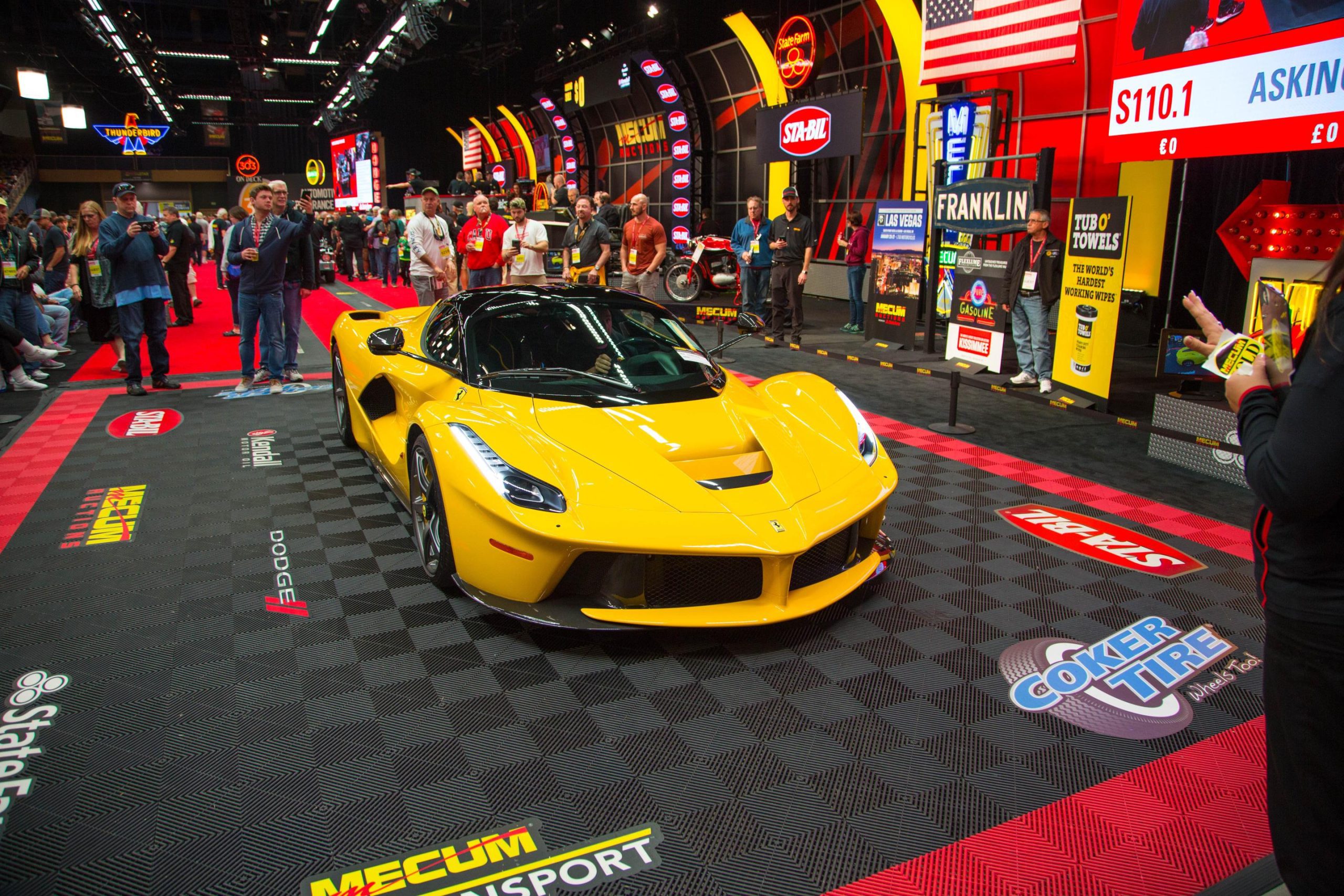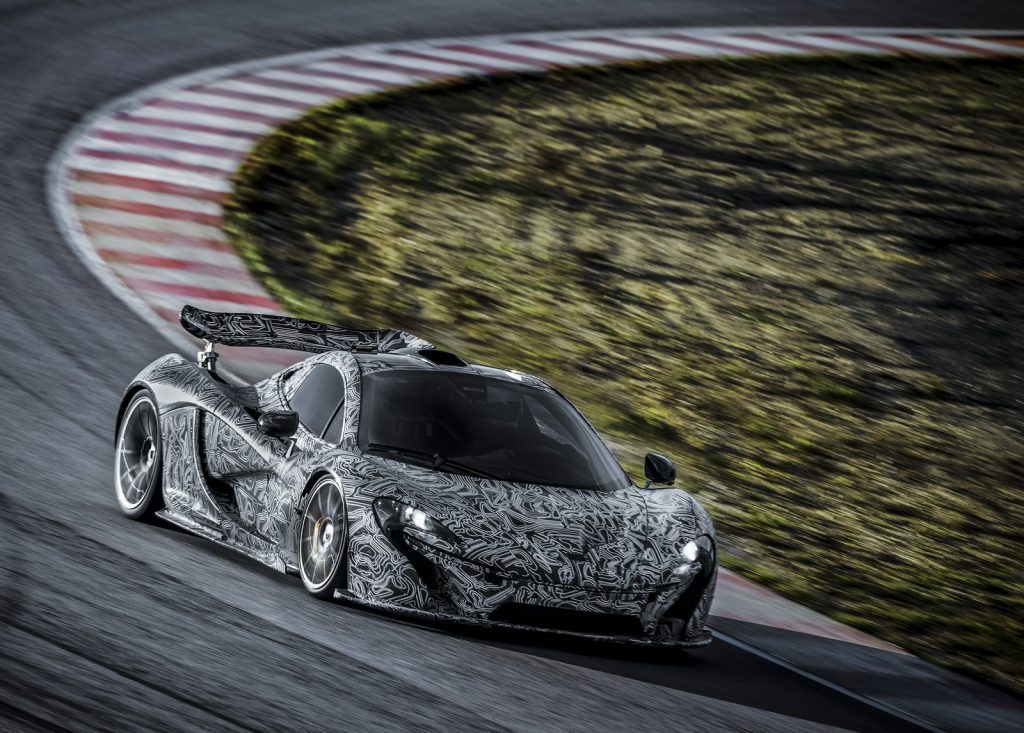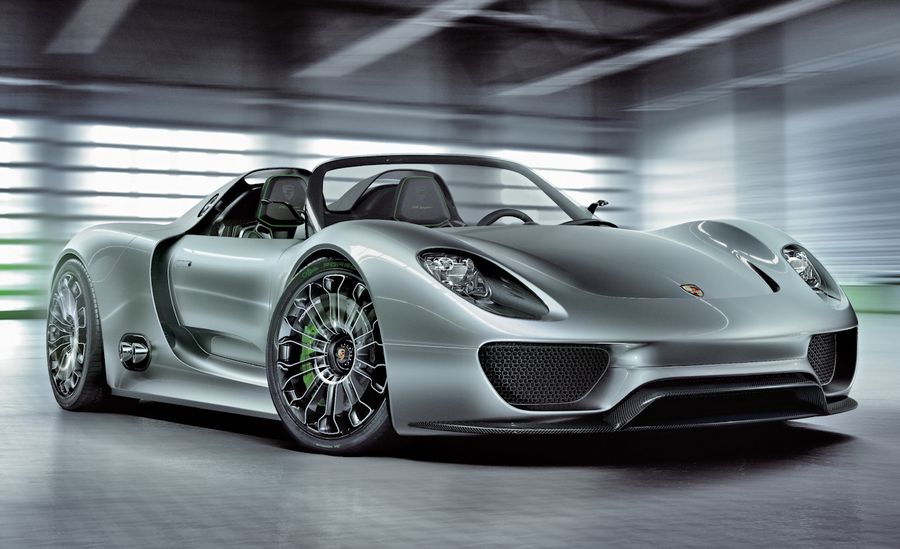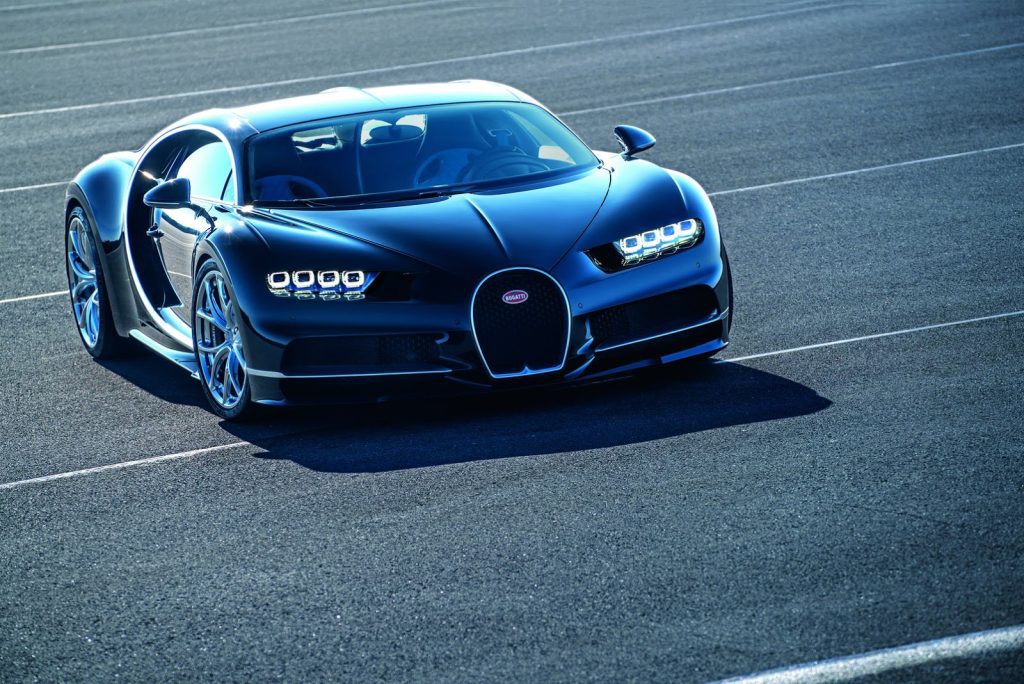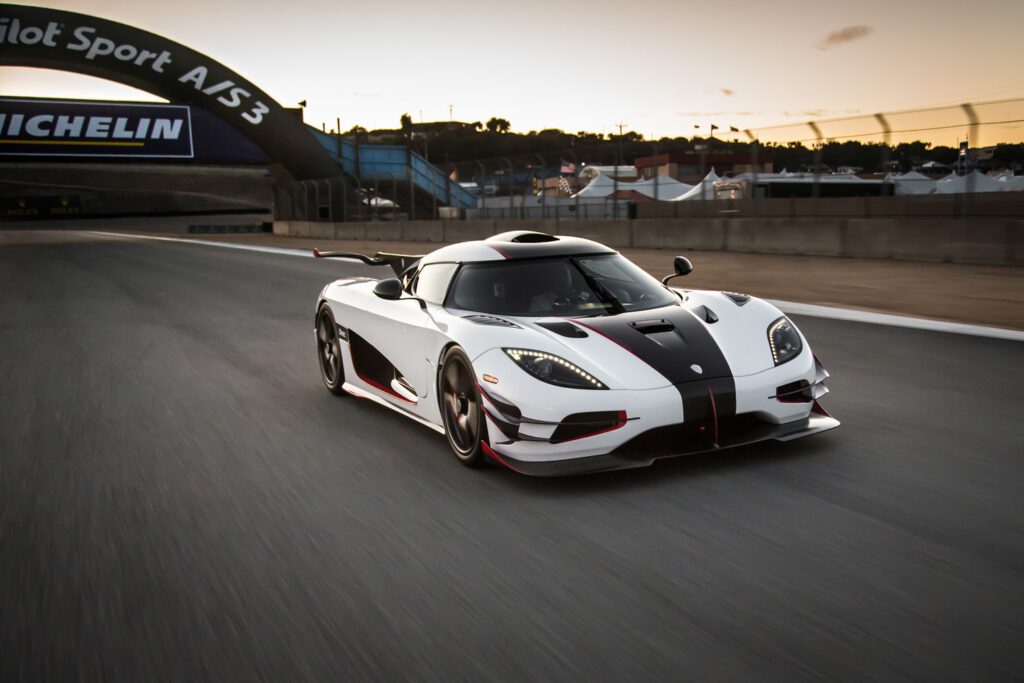Ferrari LaFerrari: Review, Price, Specs, Videos, Images, Performance & More
Introduction
What happens when quite possibly the world’s greatest supercar and hypercar maker sets out to create its greatest model ever?
The Ferrari LaFerrari – that’s what.
Described at launch by company president Luca Di Montezemolo as “the maximum expression of what defines our company,” the LaFerrari was revealed at the 2013 Geneva Motor Show.
Limited to just 499 examples (although since an additional 210 Aperta open-top LaFerraris have been produced), the LaFerrari featured a Formula-One derived HY-KERS system – an electric motor teamed to a 6.3-litre V12. Some would shirk at the concept of a hybrid Ferrari, but while enhanced efficiency is a by-product of the LaFerrari’s powertrain, this was by no means Ferrari’s motivation with the system.
Following in the footsteps of legendary Ferrari halo cars as the 288 GTO, the F40, F50 and Enzo, the LaFerrari had its work cut out from the start. Add to that competition – yes, at this insane level of performance and prestige – from Porsche and McLaren with their hybrid hypercars, the 918 and P1, and this ultimate Ferrari model had a lot to deliver in order to stand out.
Design, Styling & Interior
The overall shape of the LaFerrari – inside and out – is dictated mainly by the car’s carbon fibre tub chassis. Up front, surfaces are kept to a minimum and what is there is minimised to aid aerodynamics, with every strafe and slice in the car’s bodywork having been optimised in the F1 Wind Tunnel. Ferrari sought to produce a shape with the highest degree its efforts have granted the hypercar with a drag coefficient of just 3.
Underneath the car, active aerodynamic features including diffusers and a guide vane team up with the rear spoiler to generate downforce, gluing the LaFerrari to the road or track. These active features are automatically controlled by the car’s computer brain, which analyses various parameters to adjust the systems to work optimally to the conditions.
Inside the LaFerrari, carbon fibre detailing dominates, with the two seats bolted directly to the tub. A bulky squared-off steering wheel greets the driver, with Formula-One inspired LEDs to indicate when to change gear and Ferrari’s now-familiar Mannetino drive mode selector nestled among the various controls on the wheel.
An in-house design team headed up by Flavio Manzoni handled styling for the Ferrari LaFerrari. Inspiration was gathered from the engineering team to ensure a form that reflected the functional elements of the car, as well as taking inspiration from various Ferrari racecars from over the years.
Performance
LaFerrari’s 6.3-litre V12 hybrid power plant produces 950hp (788hp at 6750rpm from the V12 and 160hp courtesy of the electric motor, which delivers the power to the differential). The car’s dry weight is a meagre 1255kg, and on a charge 0-60 is dispatched in under three seconds. Top speed is rated by Ferrari as somewhere north of 217mph.
Figures only tell a part of the story with this car, with the sensations and usability involved in that performance having been prioritised by Ferrari during the car’s development. Despite its obvious track potential the LaFerrari is reputedly fairly comfortable and compliant on the road. Ambling about town, the car’s double clutch automatic gearbox takes the onus of shifting away from the driver, while a surprisingly supple ride cossets the driver, despite the perceived harshness often brought on in vehicles fitted with carbon fibre tubs.
Get it to a track, however, and the LaFerrari will do its thing better than almost any other road car on the planet. Those who questioned the addition of the hybrid powertrain may be surprised to find out its fitment is mainly to help out on the racetrack – with lowered emissions just a byproduct of that.
The HY-KERS system ensures on-demand torque across the rev range, improving throttle response for the driver and making chasing that 9250rpm redline even more addictive.
Ride & Handling
Performance and track capability are almost a given in a car of this caliber, and those the LaFerrari has in cartfuls. Its really surprising party piece are its manners on the road.
Ferrari wanted the car to be usable on the road and its automatic gearbox is sedate and easy to live with around town as these systems go, according to reviews of this scarlet missile.
Visibility is good around the front three-quarters, while the ride quality is as good as you can expect in a hypercar with seats bolted directly to a super-stiff carbon fibre chassis.
Take things up a notch and the LaFerrari provides an involving experience, with the active aero and stability control system working in tandem to flatter the driver. Steering response is smooth and communicative; giving an enjoyable response on the road that also translates well to track driving. Many of the videos we have brought together include footage of LaFerraris in acrobatic tail slides, which the system allows to flourish – to a point.
On track, the LaFerrari impresses further with the full fury of the V12 and HY-KERS systems available to be exploited in a chassis that is more than up to the task. Gearshifts are reputedly so quick as to almost be seamless, and the balance of the package allows the car to simply erupt along straights and flow through corners.
Prices & Specs
If you’re looking for a LaFerrari, it will have to be used as the limited run of 499 hardtops and 210 Aperta open-tops all sold out, despite an initial asking price of around $1,420,000 for the coupe and no official price confirmed for the convertible.
Thanks to the exclusivity of this “ultimate Ferrari” prices have quickly skyrocketed to hilarious levels on the auction circuit, so if considering one then deep pockets and a chequebook long enough to fit at least six zeroes and a digit or two in front are a must.
Ferrari auctioned off the final “new” examples of the Aperta and coupe LaFerrari to benefit charity. The final coupe (car number 500) went for $7 million, in aid of reconstruction in Italy following 2016’s earthquakes.
More recently, the last of the run (210th) Aperta convertible broke records when it went under the hammer at RM Sotheby’s, fetching almost $10 million, with the proceeds of the sale going to Save the Children.
Ferrari LaFerrari & Performance Numbers
With some ballistic performance figures, the Ferrari LaFerrari’s stats read like one of the most hyperbolic Top Trumps cards in the deck. Would you expect any less from one of the top trio of hypercars from some of the most renowned and established names in the game?
The LaFerrari may feature a hybrid system, but this is no silent-running-around town green machine (although Jay Kay’s LaFerrari was VERY green).
Ferrari said that while a ‘side effect’ of the HY-KERS system was a reduction in emissions, the car would not be capable of running in electric-only mode because Ferrari was not interested in electric cars during the development of the LaFerrari.
In fact, the hybrid system’s only function on the halo car is to enhance its performance – something that the reviews linked to later in this piece will attest to.
Model & Price Information
| Make | Ferrari |
| Model | LaFerrari |
| Generation | 2013-2016 (F150) |
| Sub-Model | N/A |
| Car type | Hypercar |
| Category | Series Production Car |
| Built At | Maranello, Italy |
| Released at | Geneva Motor Show 2013 |
| Introduced | Mar-13 |
| Base Price (US) | $1,420,000 |
| Base Price (Europe) | €1,300,000 / £1,000,000 |
| Units build | 499 |
Body, suspension & powertrain
| Curb Weight | 1255kg (2767lb) (dry) |
| Layout | rear-mid engine, rear whieel drive |
| Body / Frame | hand-laminated, autoclave-cured carbon fibre tub |
| Driven wheels | RWD |
| F suspension | double wishbones |
| R suspension | multi-link |
| Engine | 65° V12 with HY-KERS system |
| Position | rear mid-mounted |
| Aspiration | naturally aspirated |
| Block Material | |
| Valvetrain | |
| Fuel Feed | |
| Displacement (Liters) | 6.3 litres |
| Displacement (in³) | 384.45 in³ |
| Transmission | 7-speed double clutch automatic |
Engine & Output
| Power (kW) | 708 kW @ 9000rpm |
| Power (bhp) | 950 bhp @ 9000rpm |
| Power (kw) / liter | 112.45 kW |
| Power (bhp) / liter | 150.8 bhp |
| Power (kw) / weight | 447 kW / ton |
| Power (bhp) / weight | 599.369 hp / ton |
| Torque | 663.8 lb-ft |
| Efficiency | |
| Specific output | |
| Average fuel consumption |
Performance & Acceleration stats
| Top speed | 217 mph+ |
| 0 – 100 kph | 2.7 s |
| 0 – 120 km/h | 3.7 s |
| 0 – 140 km/h | 4.5 s |
| 0 – 160 km/h | 5.2 s |
| 0 – 180 km/h | 6.1 s |
| 0 – 200 km/h | 6.9 s |
| 0 – 60 mph | 2.7 s |
| 0 – 100 mph | 5.2 s |
| 1/8 mile | 6.6 s @ 121.2 mph |
| 1/4 mile | 9.7 s @ 149/1 mph |
| 1000 m | 18.2 s @ 312 kph |
| Lateral acceleration | 1.16 g |
| Nürburgring Lap Time | 6:35 (rumoured – LaFerrari XX) |
Image Galleries & Videos
Photos & Wallpapers
The overall shape of the LaFerrari is dictated by function. At launch, Ferrari’s President Luca di Montezemolo, announced that “LaFerrari is the finest expression of our company’s unique, unparalleled engineering and design know-how, including that acquired in Formula 1.”
Gaping air intakes funnel air around the car, generating downforce via a network of diffusers at the front and rear of the car, as well as the rear spoiler. Rather than going to Pininfarina for the styling, Ferrari appointed Flavio Manzoni and its internal design team to style the LaFerrari, which allowed them to work closely with the engineers of the project to ensure the form supported the function.
Ferrari LaFerrari Videos
From the moment the LaFerrari was unveiled in Geneva, everyone wanted to get their hands on it to see if it would live up to the hype.
To provide you with a comprehensive range of expert opinions on the car – teamed with some utterly jaw-dropping future – we’ve gathered together videos from some of our most trusted commentators in one place so you can immerse yourself in the excitement that a top-tier, cutting edge Ferrari hypercar can provide.
See Also: More Ferrari Videos
Kicking off the LaFerrari coverage is EVO, with a simply gorgeous video taking in the detail of the LaFerrari, before treating the viewer to some action shots of the car in its natural habitat – on a ribbon of tarmac draped across the Italian countryside and on the test track at Fiorano.
Dickie Meaden is the man in the hot seat behind the wheel of LaFerrari, taking to the tarmac on a gloriously sunny day.
Despite his reputation as Captain Slow, James May was dispatched by BBC Top Gear to give his take on the Ferrari LaFerrari, tearing up some Italian tarmac in a celebration of the bare faced ludicrousness of the hypercar – as well as pitting it against his colleagues’ experiences with the remainder of the hypercar triumvirate.
Chris Chilton, Editor-At-Large at CAR Magazine gets a look behind the scenes at the creation of the LaFerrari, before experiencing it for himself on Fiorano and on the public roads.
The footage includes some great shots of the car pelting down the straights and drifting around the corners of the Ferrari test track – treat yourself to four and a half minutes of joyous celebration at the LaFerrari’s capabilities.
Original Press Release
Maranello, March 5, 2013 – The LaFerrari Unveiled at Geneva
An iconic name for a car that encompasses the very best of Prancing Horse passion, technology and exclusivity
On display the most comprehensive and acclaimed Ferrari range ever.
The wraps are finally off the LaFerrari. The Prancing Horse’s eagerly-anticipated limited-series special, of which just 499 will be built, made its world debut today at the Geneva International Motor Show.
“We chose to call this model LaFerrari,” declared Ferrari’s President, Luca di Montezemolo, “because it is the maximum expression of what defines our company – excellence. Excellence in terms of technological innovation, performance, visionary styling and the sheer thrill of driving. Aimed at our collectors, this is a truly extraordinary car which encompasses advanced solutions that, in the future, will find their way onto the rest of the range, and it represents the benchmark for the entire automotive industry. LaFerrari is the finest expression of our company’s unique, unparalleled engineering and design know-how, including that acquired in Formula 1.”
For Ferrari the development of a limited-series special like the LaFerrari represents an opportunity to experiment with all the technological solutions that will later filter down onto the production cars. Of particular significance in this context is the introduction of the hybrid system which, making full use of the Scuderia Ferrari’s F1 KERS know-how, has resulted in a solution that exalts Ferrari’s fundamental values – performance and driving thrills. The hybrid technology used, known as HY-KERS, represents the perfect combination of maximum performance and lower emissions. LaFerrari in fact emits just 330 g/km of CO2 but without resorting to electric-only drive which would not fit the mission of this model. The HY-KERS system is, however, designed so that in future applications a car can be driven using exclusively electric power for a few kilometres and, during development testing, a full-electric version of LaFerrari achieved just 220 g/km of C02 emissions on the combined cycle.
The LaFerrari is equipped with dynamic controls that are integrated for the first time ever on a Ferrari road car with active aerodynamics and the HY-KERS system. Thanks to Ferrari’s proprietary logic which govern all the systems, the car can achieve absolute levels of performance, aerodynamic efficiency and handling without any form of compromise in any area. A very advanced and uncompromising approach was also taken with the interior design which features an HMI inspired by F1 single-seaters.
Architecture
The LaFerrari’s architecture posed the first challenge for the Prancing Horse team at the planning stage of the design. The aim was to achieve ideal weight distribution (59% at the rear) and a compact wheelbase despite the extra bulk of the hybrid system. The result is that all of the masses are situated between the car’s two axles and as close as possible to the floor to lower its centre of gravity (by 35 millimetres) and thereby guarantee dynamic handling and compact dimensions.
The layout of the cabin made a significant contribution in this regard. The seat is fixed and tailored to the driver while both the pedal box and steering wheel are adjustable. The driving position is similar to that of a single-seater and was designed after consultation with the Scuderia Ferrari drivers, Fernando Alonso and Felipe Massa, who played an active role throughout the entire development process.
The LaFerrari’s chassis features no less than four different types of carbon-fibre, all hand-laminated and autoclave-cured in the racing department using the same design and production methods as the Formula 1 car. This helped optimise the design: various functions were integrated (e.g. seats and battery compartment) into the chassis to improve torsional rigidity (+27%) and beam stiffness (+22%) whilst cutting weight.
Powertrain
The LaFerrari is the first car in Ferrari history to be powered by the HY-KERS system. The ICE represents the pinnacle of engine development and research, with a 6262 cc V12 that punches out 800 CV and revs to a maximum of 9,250 rpm, a record for an engine of this displacement. It also features a very high 13.5:1 compression ratio and a high specific output equal to 128 CV per litre. The engine is coupled with a 120 Kw (163 CV) electric motor, giving it a combined power output of 963 CV.
The high torque levels available at low revs from the electric motor allowed the engineers to optimise the internal combustion engine’s performance at higher revs, thus providing a constant supply of exceptional power throughout the rev range. Total torque generated is in excess of 900 Nm. The hybrid system is composed of two electric motors developed in collaboration with Magneti Marelli – one powering the driven wheels and the second the ancillaries – and a battery pack attached to the floor of the chassis consisting of cells that are assembled in the Scuderia Ferrari department where the KERS for the F138 is also made. The Scuderia’s expertise allowed considerable savings in weight and size of the individual components and the batteries weigh just 60 kg while providing the highest energy density possible for this kind of application.
The batteries are charged in different ways: under braking (even hard braking with the ABS active) and every time the V12 produces more torque than required, such as in cornering. In the latter instance, rather than the being sent to the wheels, the excess torque is converted to energy and stored in the batteries.
The electric motor is coupled with the F1 dual-clutch gearbox to the benefit of optimal weight distribution, but also to boosting energy efficiency as torque is instantly available to the wheels and, vice versa, from the wheels to the electric motor in recharging.
Aerodynamics
Active aerodynamics play an essential role, as they allow a complete adjustability of the car’s configuration to attain LaFerrari’s exceptional performance.
The engineers’ aim was to deliver the highest degree of aerodynamic efficiency ever achieved with any road car, with a coefficient of nearly 3, thanks to technical solutions honed with CFD analysis and fine-tuned in the F1 Wind Tunnel.
To boost efficiency, the LaFerrari sports active aerodynamic devices front (diffusers and guide vane on the underbody) and rear (diffusers and rear spoiler) which generate downforce when needed without compromising the car’s overall drag coefficient. These devices deploy automatically on the basis of a number of different performance parameters which are monitored in real time by the car’s dynamic vehicle controls, thus guaranteeing the ideal configuration on the basis of the driving conditions.
Control systems
One further innovative aspect of the LaFerrari is the integration of its active aerodynamics and hybrid system with the other dynamic control systems aboard. This means the car responds intelligently to driver inputs, making for a seamless blend of unprecedented performance and unparalleled driving emotions.
Proprietary Ferrari algorithms deliver optimal integration of the electric motor and V12 for instantaneous response. In cornering, for instance, the HY-KERS keeps the V12’s revs high to guarantee better acceleration on exit.
The LaFerrari’s Brembo braking system is also integrated with the hybrid system, and incorporates several new features, including new lightweight callipers designed to guarantee correct cooling and carbon-ceramic material (CCM) discs featuring a new composition.
The car’s extreme performance potential called for a different tyre set-up, with 265/30 R 19 Pirelli P-Zeros on the front and 345/30 R 20s on the rear.
All in all the car guarantees maximum driving thrills in every situation and performance levels are top level: 0-100 km/h in less than 3 seconds and 0-200 km/h in under 7 seconds, a lap time at Fiorano of under 1’20” – 5 seconds faster than the Enzo and over 3 seconds faster than the F12berlinetta. LaFerrari is thus the fastest road car in Maranello’s long history.
Styling
The Ferrari design team led by Flavio Manzoni developed the LaFerrari’s styling working in close synergy with the engineers to emphasise the exacting link between form and function. The result is an extreme, innovative design which retains close links to the marque’s tradition. This is most evident in its side profile: the car has a sharp, downward-sloping nose and a very low bonnet which emphasises its muscular wheelarches, a clear nod to the gloriously exuberant forms of late-1960s Ferrari sports prototypes.
The LaFerrari’s body has been given a sculptural treatment heavily influenced by its clearly F1-inspired aerodynamics and a tail section that exudes uncompromising sportiness.
Inside there’s a newly-designed steering wheel sporting all the major commands, and the gear-shift paddles are now longer and more ergonomic. The signature bridge on which the F1 gearbox functions are clustered has taken on a sleek, suspended wing-like shape. The whole interior, in fact, has a fiercely track-inspired, pared-back allure.
The Ferrari range
Aside from the new limited-series special, the Ferrari stand also features the complete range which is the most wide-ranging and critically acclaimed in its entire history. The five models all share the same Ferrari DNA in terms of performance, driving pleasure and technology, yet each one has its own strongly unique identity, in line with the company’s philosophy of “different Ferraris for different Ferraristi”.
Ferrari’s 12-cylinder GT sports car prowess is represented at Geneva by the FF, the very first four-seater and four-wheel drive in Prancing Horse history. It will be sporting a Grigio Ingrid livery with an elegant glass roof and Iroko interior. The FF is also now seamlessly integrated with Apple technologies, thanks to direct access to the infotainment system via SIRI voice commands and the adoption of two iPad Minis as the entertainment system of choice for the rear seat passengers.
Blistering performance and sublime driving pleasure even at low speeds are assured behind the wheel of the multi-award-winning F12berlinetta, which is powered by a mid-front V12. Unique handling characteristics, extreme aerodynamics and an innovative yet classic design are its signatures. The car on show at Geneva has a Grigio Silverstone livery and a Sella di Cavallo interior.
Moving on to the 8-cylinders, the California 30, in sophisticated Nero Stellato with a Crema interior, is a convertible GT that uncompromisingly marries sportiness and versatility. The California’s already-massive popularity with both press and public alike grew still further after its V8’s output was upped by 30 hp to 490 hp, and 30 kg was slashed off its overall weight.
The blistering 458 Italia is a sublime, thoroughbred sports car. It and its drop-top sibling, the 458 Spider, are equipped with the same extraordinary mid-rear-mounted V8 engine which was named International Engine of the Year in both 2011 and 2012. These two models continue Ferrari’s glorious tradition with this particular layout. The coupé seen at Geneva sports an aggressive Bianco Avus livery and sleek black interior with carbon-fibre trim, while the Spider, which dominates the Tailor-Made extreme personalisation area, takes its inspiration from the legendary 1957 250 Testa Rossa that sold for a record 16 million dollars at auction at Pebble Beach in 2011. It has the same red and blue livery and a host of competition car details in its cabin, not least of which are suede-upholstered seats and Alutex trim.
The Verdict Is In
What The Experts Said…
The world is full of armchair commentators when it comes to cars. At Supercars.net we have a number of journalists and automotive publications we rely on when we want to get unbiased opinions from people we admire.
Below, we’ve outlined some of the things these experts had to say about the new Ferrari LaFerrari. We have included snippets only so definitely dive deeper into their content TO find out the details behind their assessments. Please support these awesome publications because they invest a lot in the details, amazing product photographs and great writers.
Evo – “More a force of nature than something man-made…”
Richard Meaden drove the LaFerrari for Evo at the car’s launch and his review immediately draws comparison between it and its direct rivals – the McLaren P1 and the Porsche 918.
He also considers the car’s past and the bloodline that it must live up to if it is to be considered one of Ferrari’s all-time greats, citing the 288 GTO, F40, F50 and Enzo as among its rivals.
Dashing any concerns that the hybrid system has blunted the impact of the Ferrari V12, Richard declares that the reality is just the opposite. “The hardware might be thoroughly modern, but LaFerrari’s heart remains a screaming naturally aspirated V12 engine.”
The Good
The Bad
More: Read the Full Review
__
Top Gear – “..the most natural-feeling hybrid in existence.”
This review from Top Gear includes some simply gorgeous photography of LaFerrari, and attempts to reason the car’s other-worldly performance against the fact that “..it’s no more intimidating to drive than a 458.”
Hyperbole is abound in this article (what do you expect with a car designed to be the ultimate expression of Ferrari), with Top Gear declaring “Find a decent empty stretch of road, and you can warp the weft of spacetime with the LaFerrari’s acceleration.”
The Good
The Bad
More: Read the Full Review
__
Motor Trend – “Holy hell does this thing make a beautiful shriek!”
Carlos Lago drove LaFerrari at launch and really colours the experience with consideration given to his initial arrival at Maranello and his introduction to the car’s seating position.
Once he gets the car out on track however, all falls into place for Carlos. Despite the low seating position, he notes the view out is not encumbered by bits of bodywork like you’d find on hypercars of the past, before instantly becoming hooked on chasing the 9000rpm redline on LaFerrari’s V12. “There’s a wonderful fury accessed within the last 1000rpm that’s matched by the immediacy [of the electric motor].”
The Good
The Bad
More: Read the Full Review
__
Driving.ca – “A Formula One car with a canopy and anti-lock brakes…”
Braving the Italian rain to get a feel for the LaFerrari was David Booth of Driving.ca. He, too, was impressed by the car’s powertrain, “..the snarl of a raucous Ferrari V12 married to the instantaneouos throttle response of a torque-laden electric motor.”
He praised the LaFerrari’s suspension setup and low centre of gravity for being more forgiving than the 918 or P1, allowing him to enjoy the car more despite the inclement conditions. So much so that he remarked in his review: “..only after driving a LaFerrari can one imagine so much horsepower being so very easily controlled.”
The Good
The Bad
More: Read the Full Review
Alternatives & Rivals
Being at the upper echelon of the hypercar food chain leaves little in the way of rivals for LaFerrari. But we’d be remiss if we didn’t include a few here for your consideration – let us know which one you’d have in the comments!
McLaren P1
McLaren’s entry to the hybrid hypercar face-off is the P1. Also featuring F1-derived KERS technology to boost power but differing from LaFerrari in that it is capable of running in electric-only mode for short distances.
With 727bhp from a turbocharged V8 mated to a 176.6bhp e-motor its power comes u short of LaFerrari, but with more focus on putting extreme capabilities in the hands of the driver, the P1’s performance is considered less accessible than the LaFerrari’s, leading to Jeremy Clarkson describing it as a “widowmaker” when he reviewed it at a wet Spa Francorchamps circuit for BBC Top Gear.
Porsche 918
Completing the hypercar holy trinity is Porsche’s entry into the hybrid race. Two electric motors here work with a rear-mounted V8 to deliver up to 770bhp, though an independent all-wheel drive system (with the fronts driven by a 116bhp electric engine while the other assists power to the rear) improves adhesion to the surface.
Arguably the most conventionally good looking of the three, the 718 includes active aerodynamics and Porsche Active Suspension Management (PASM) to futher augment the driver’s skills. With technology being the main focus for Porsche with the 718, this car gains a few creature comforts in the cabin that the LaFerrari and P1 do without.
Bugatti Chiron
Arriving shortly after the triumvirate was the successor to one of the most legendary cars this century. The Bugatti Chiron had big boots to fill after all that the Veyron accomplished, but with this car Bugatti set out to provide a new benchmark, “redefining ‘the best’” as the company put it at launch.
You’ll find no hybrid system here – instead the Chiron relies on a specially-developed two-stage turbocharging system, with a pair of turbos spinning up from rest, with two more chiming in above 3800rpm.
This results in an output of 1500bhp and 1600nM of torque from 2-6000rpm. Tasty to say the least.
Koenigsegg One:1
The One:1, based on Koenigsegg’s Agera platform, is all about the numbers. More scarce than any of the other cars above (only seven plus one prototype were made), with the Swedish hypercar lunatics chasing one ratio: a one-to-one power-to-weight ratio.
Aptly, this 1,360kg machine is fitted with a 1360bhp V8, promising unhinged levels of performance and a sonorous 8250rpm rev limiter to allow full exploration of its ballistic capabilities.
Others Rivals: Pagani Huayra, very little else that is allowed on the road
Our Final Verdict
The Ferrari LaFerrari would be utterly classless were it not for the fact it arrived as two other powerhouses of the hypercar establishment were exploring the potential performance gains to be had when adding a hybrid powertrain to their halo car.
As it turned out, at launch it was immediately put up against these two rivals. But that competition may have stirred Ferrari, along with McLaren and Porsche, to up their game and identify ways to set themselves clearly apart from each other.
With the LaFerrari we got an incarnation of the ultimate Ferrari using technology available to the company in its development prior to 2014. Ferrari showed the world it could make almost unthinkable performance accessible while demonstrated that as we head into the future and further from the internal combustion engine-centric automobile, there will still be a place and a provision for cars that push the envelope, excite, enthrall and entertain.
Find A Ferrari LaFerrari for Sale
With only 499 models produced at launch, plus a more recent run of 210 Aperta convertible models, getting your hands on a LaFerrari is no easy thing.
Take into account the price these hypercars are fetching these days and if you are lucky enough to find one and be able to afford it then we at Supercars.net salute you (and would very much like to meet you!)
As LaFerrari is a rarity even at auction, we’ve gathered together a few examples that have turned up since 2014 to give you an idea of what to expect.
This example sold at RM Sotheby’s was the final example of the Aperta version of LaFerrari, and sold for €8.3 million when it was auctioned off to benefit Save the Children at Ferrari’s 70th birthday celebrations.
Another nice example is this Nero-on-Nero LaFerrari, that its previous owner had gotten some use out of. With 4000 miles on the clock and a recent full service prior to the sale, this one went for $3,410,000.
The final hard-top Ferrari (car number 500) was also auctioned off to benefit a good cause. When an earthquake struck Italy in 2016, Ferrari offered their support in this last-of-the-run LaFerrari, which fetched £5.5 million.
This one is baffling to us – someone bought a LaFerrari new and in the two years they owned it only covered 200 miles.
Standing out in Giallo Modena and fetching a price of $3,520,000 at Pebble Beach 2017, this 2015 Model Year LaFerrari’s second owner must surely have been chuffed to get the car in such pristine condition two years after new examples ceased to be offered.





